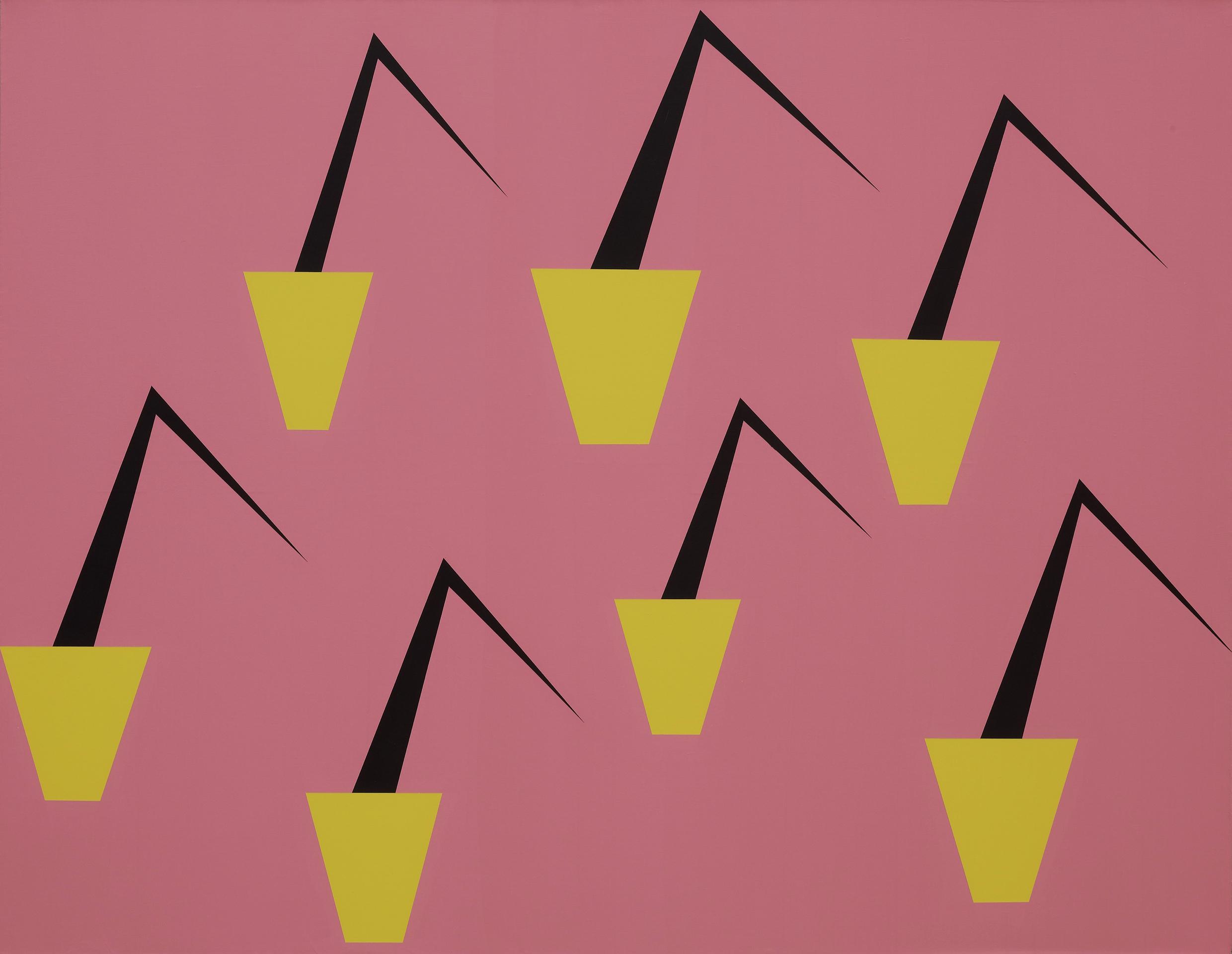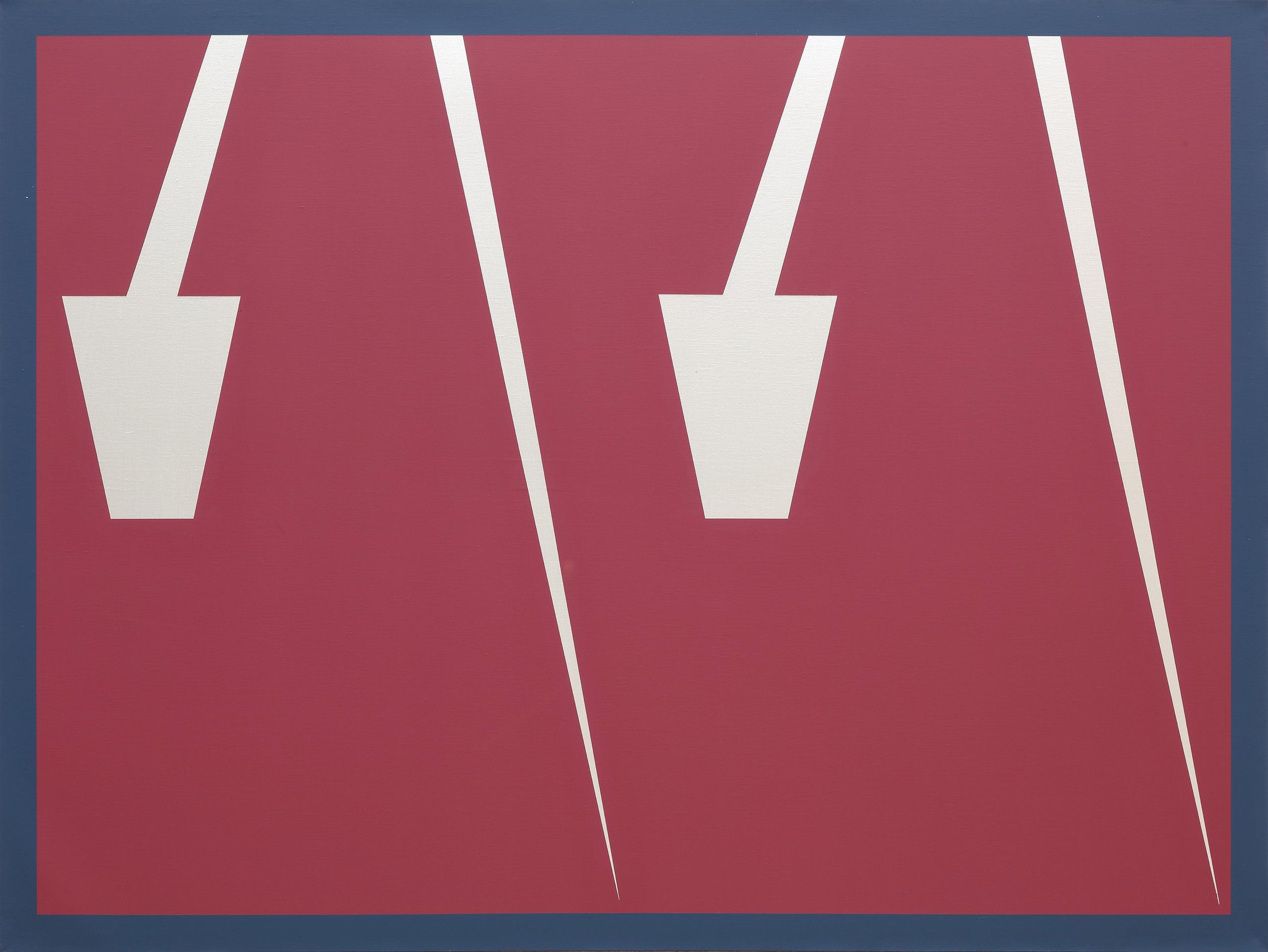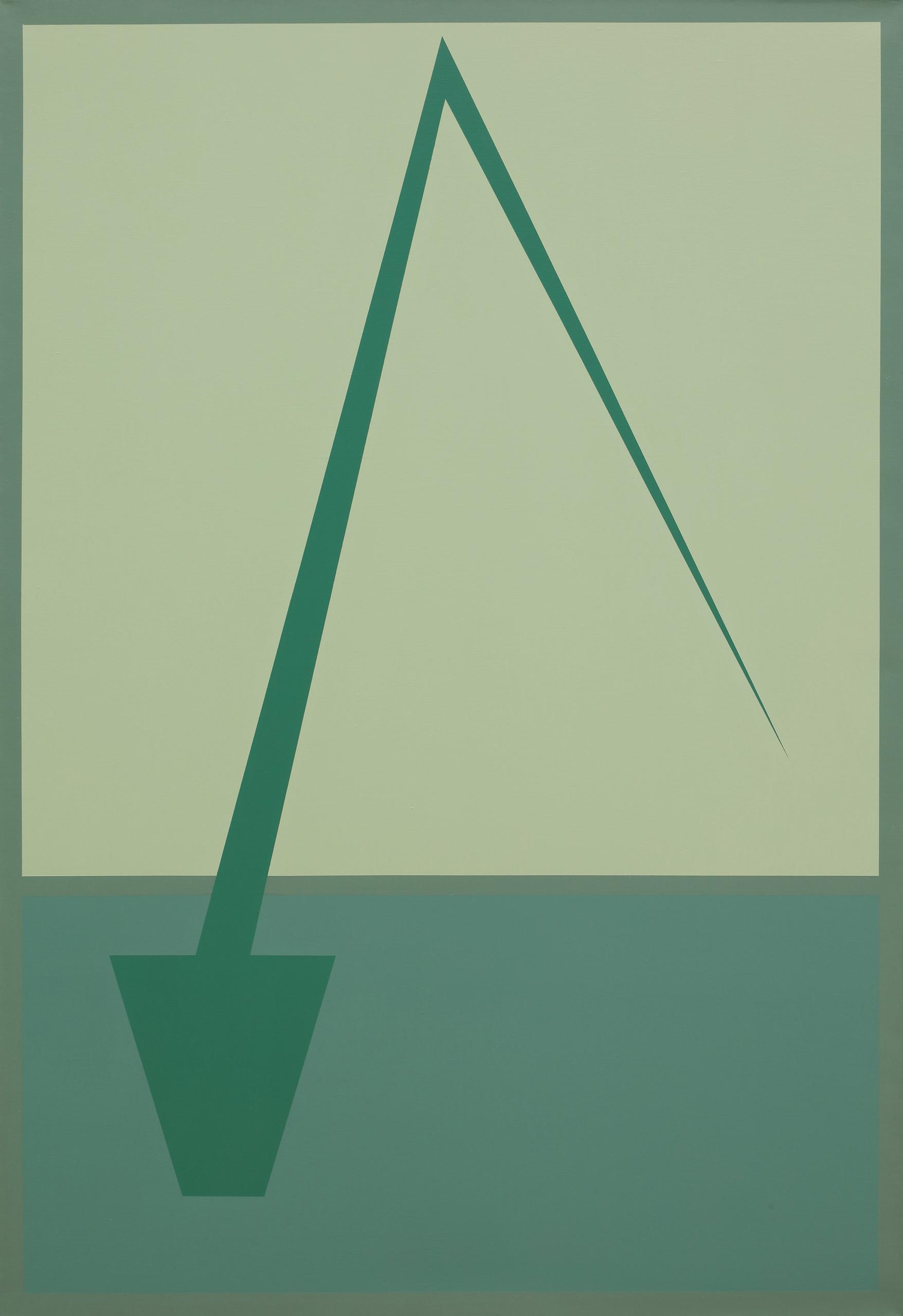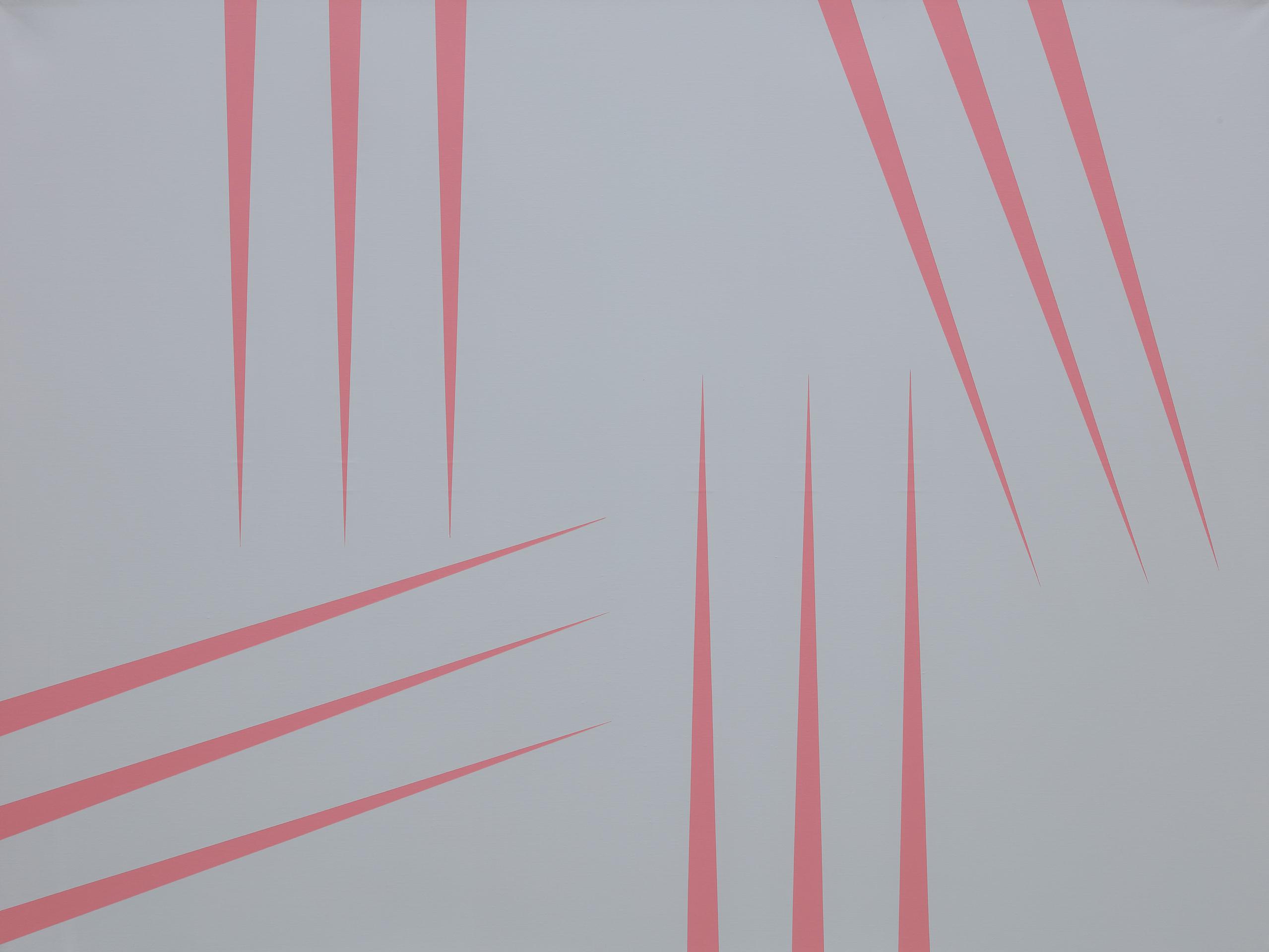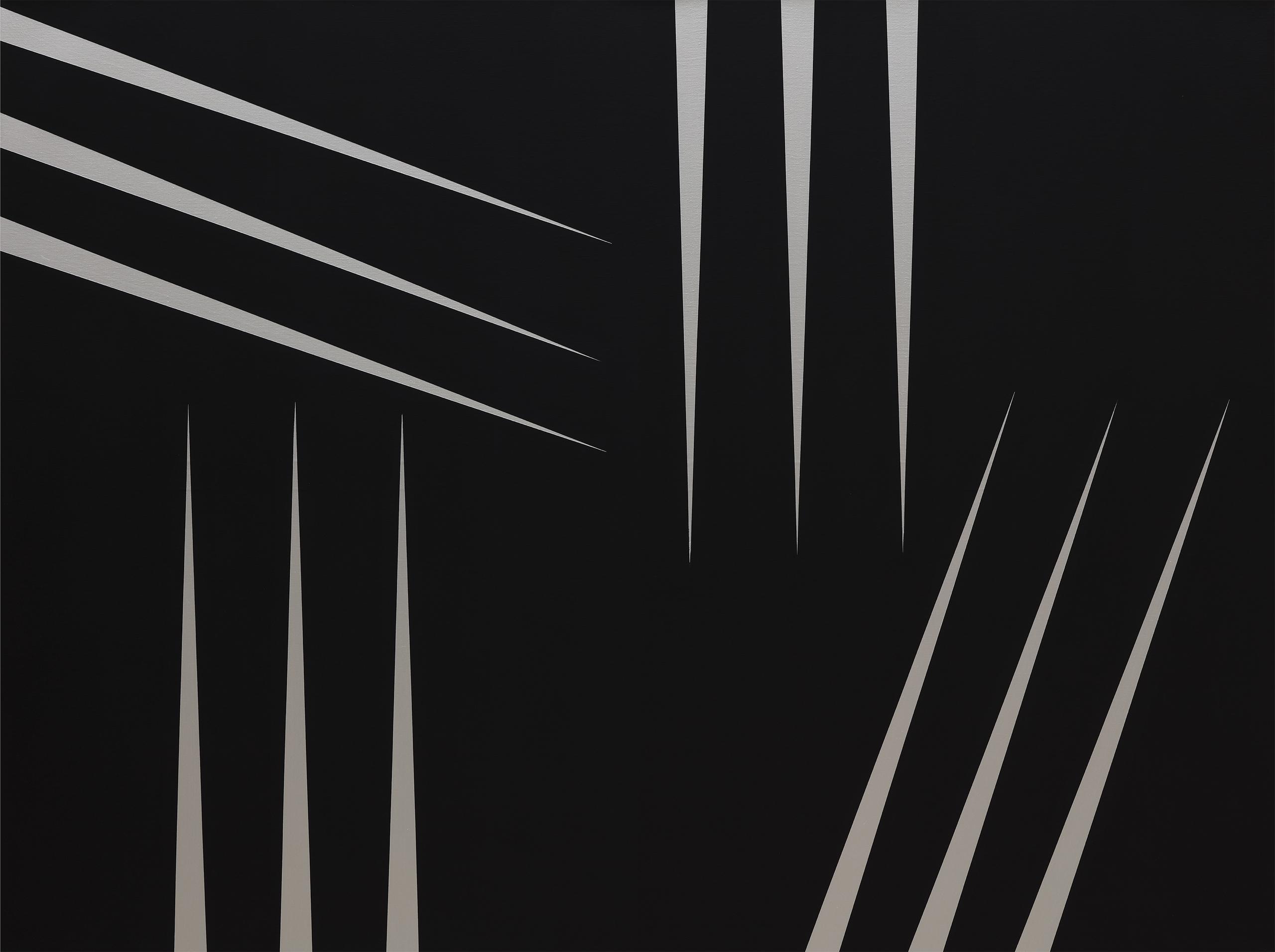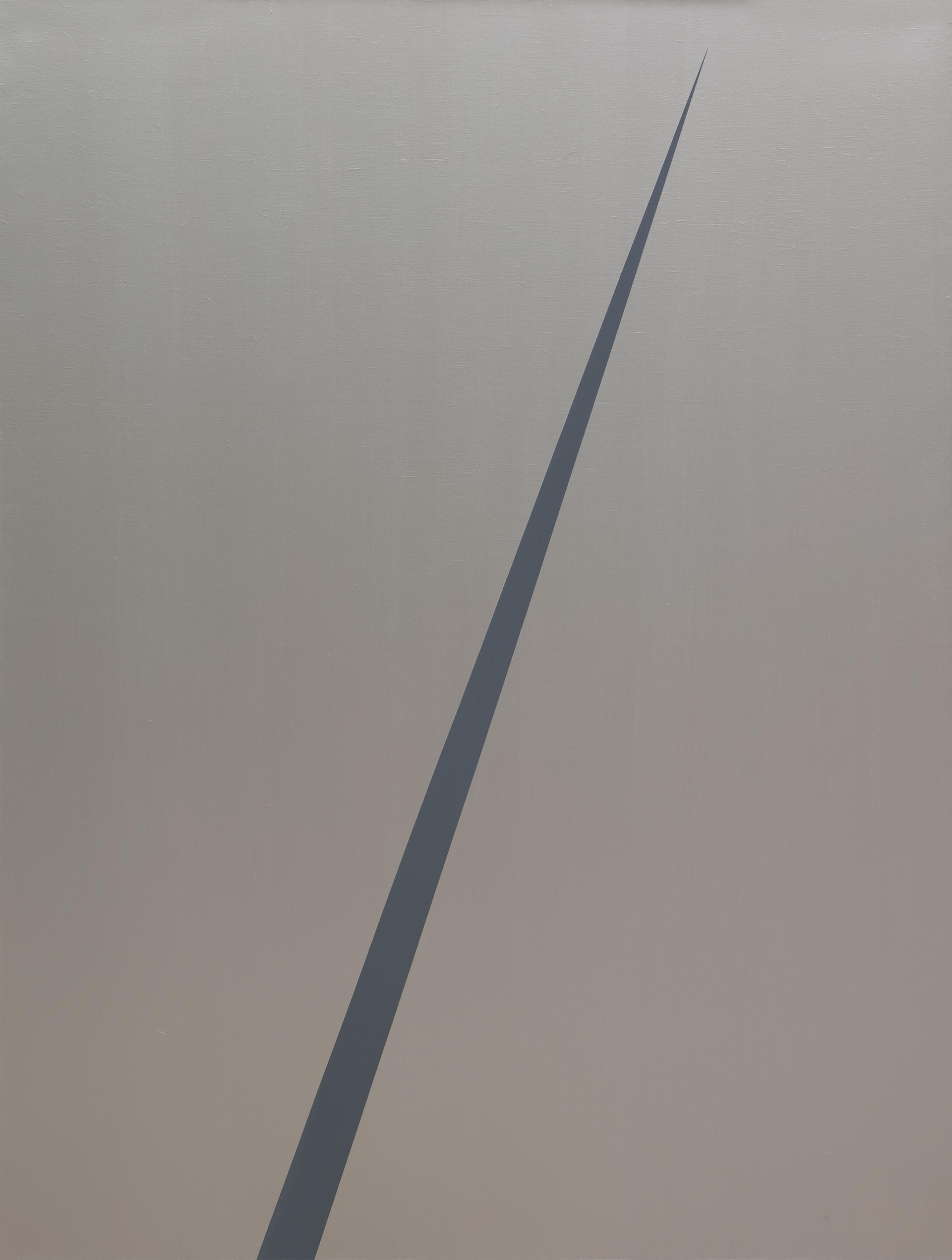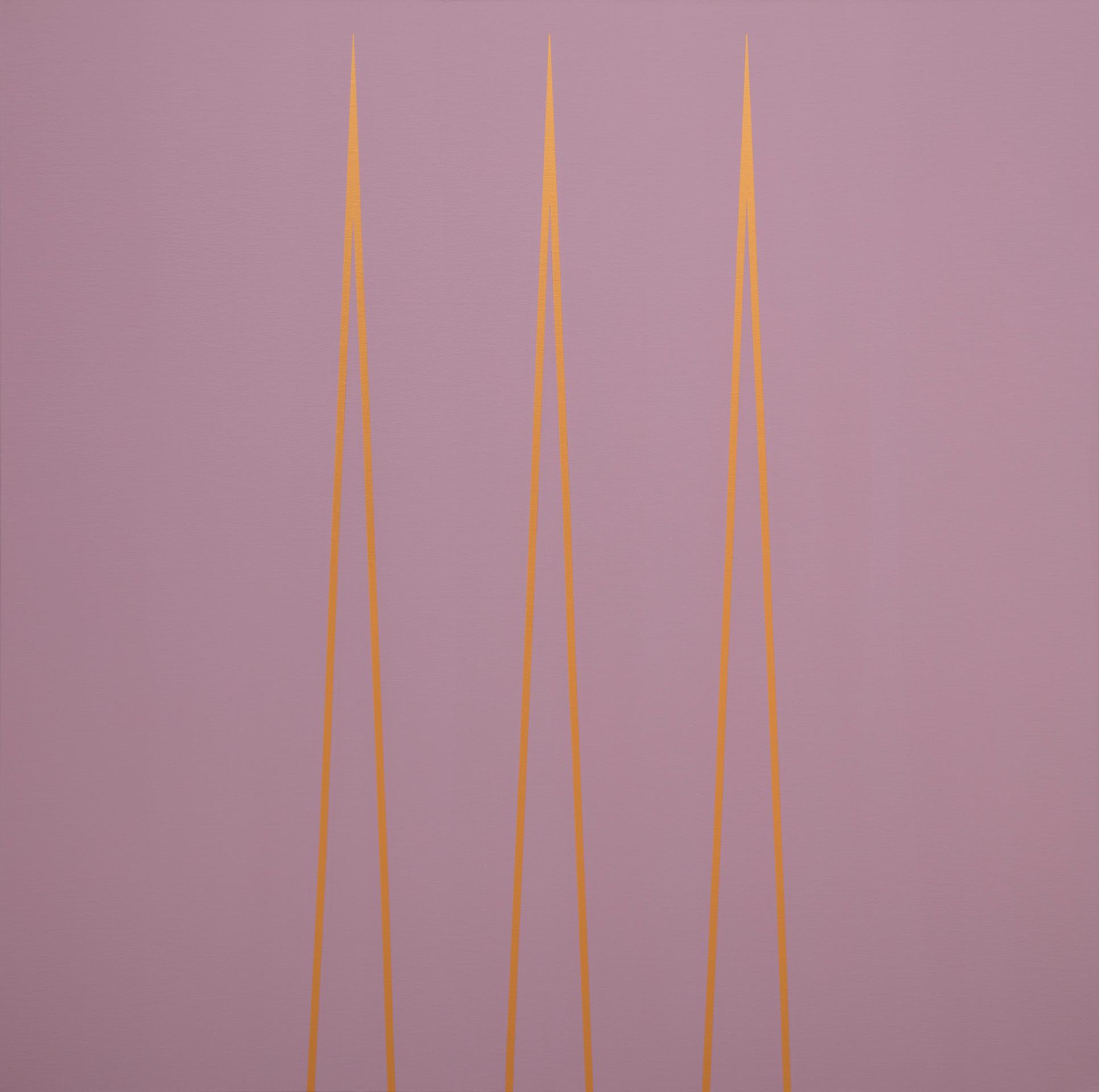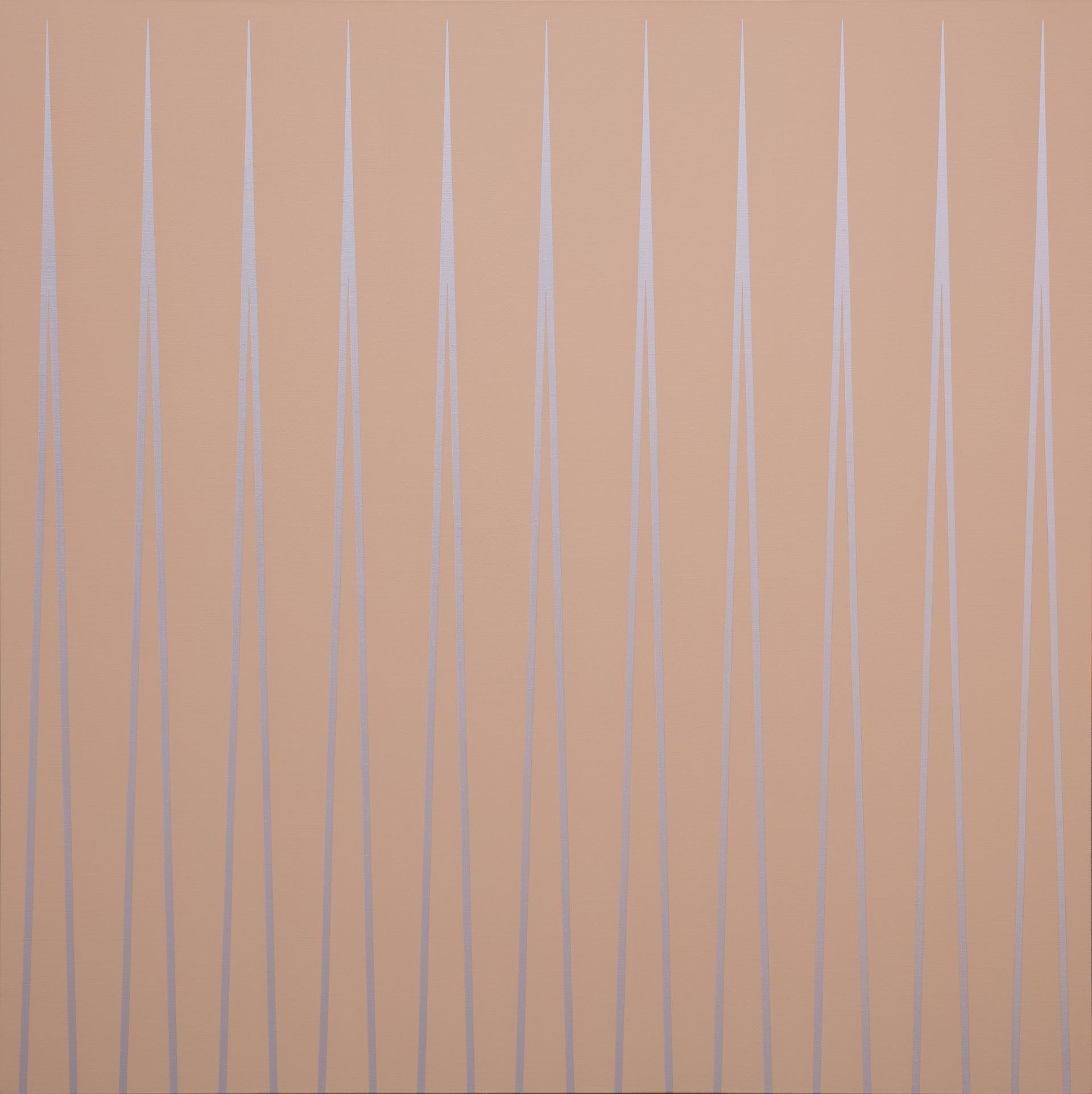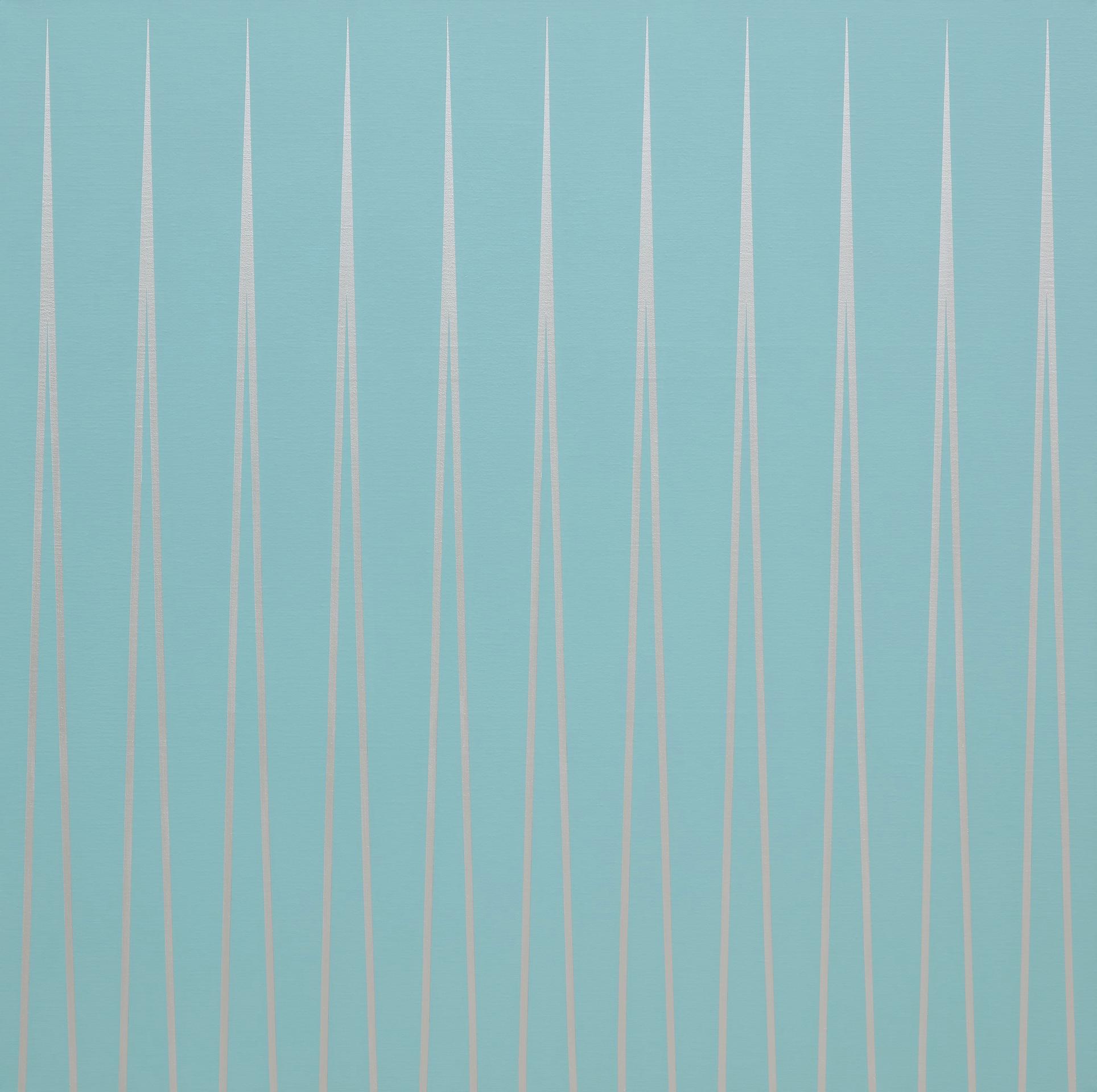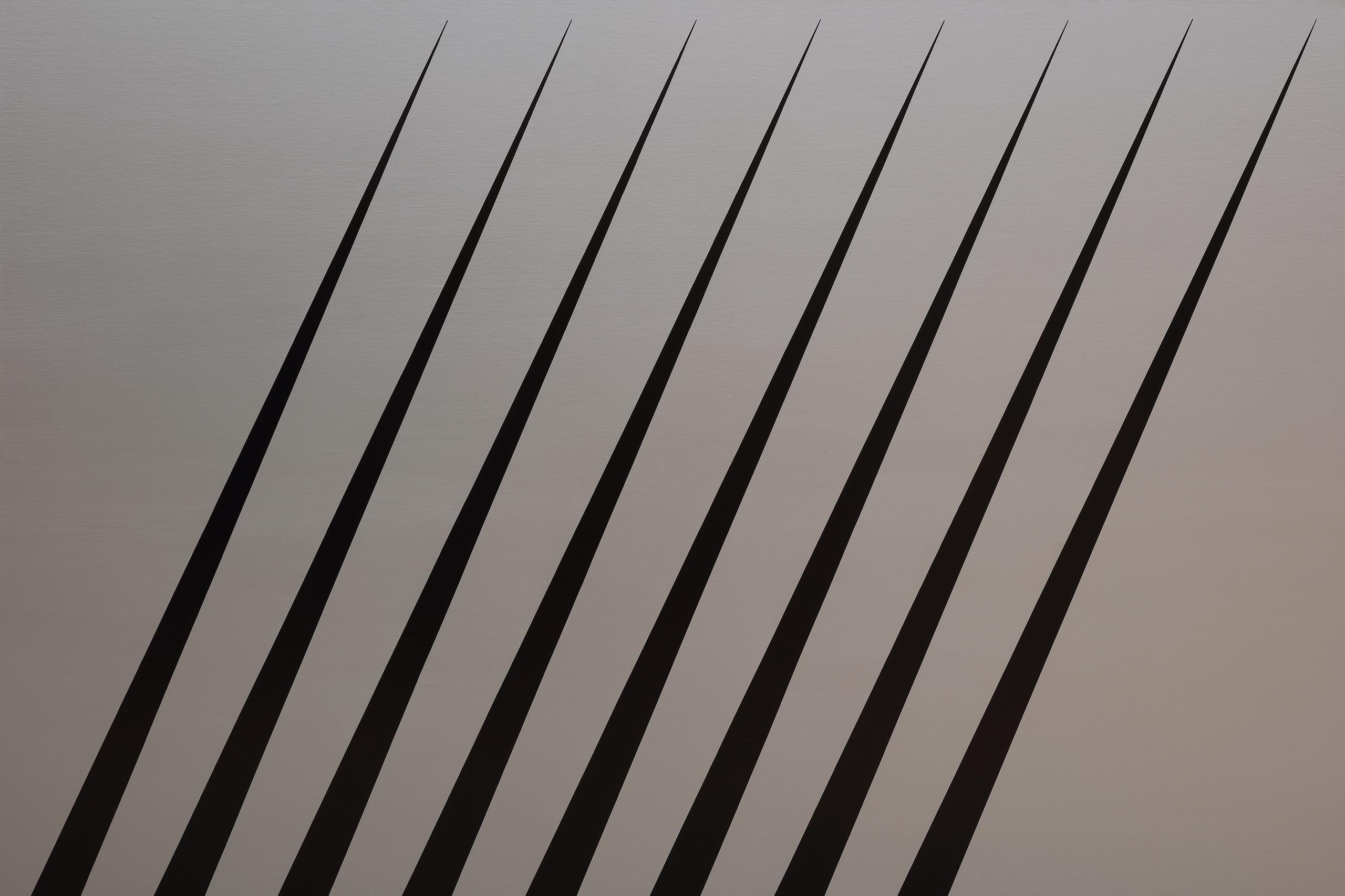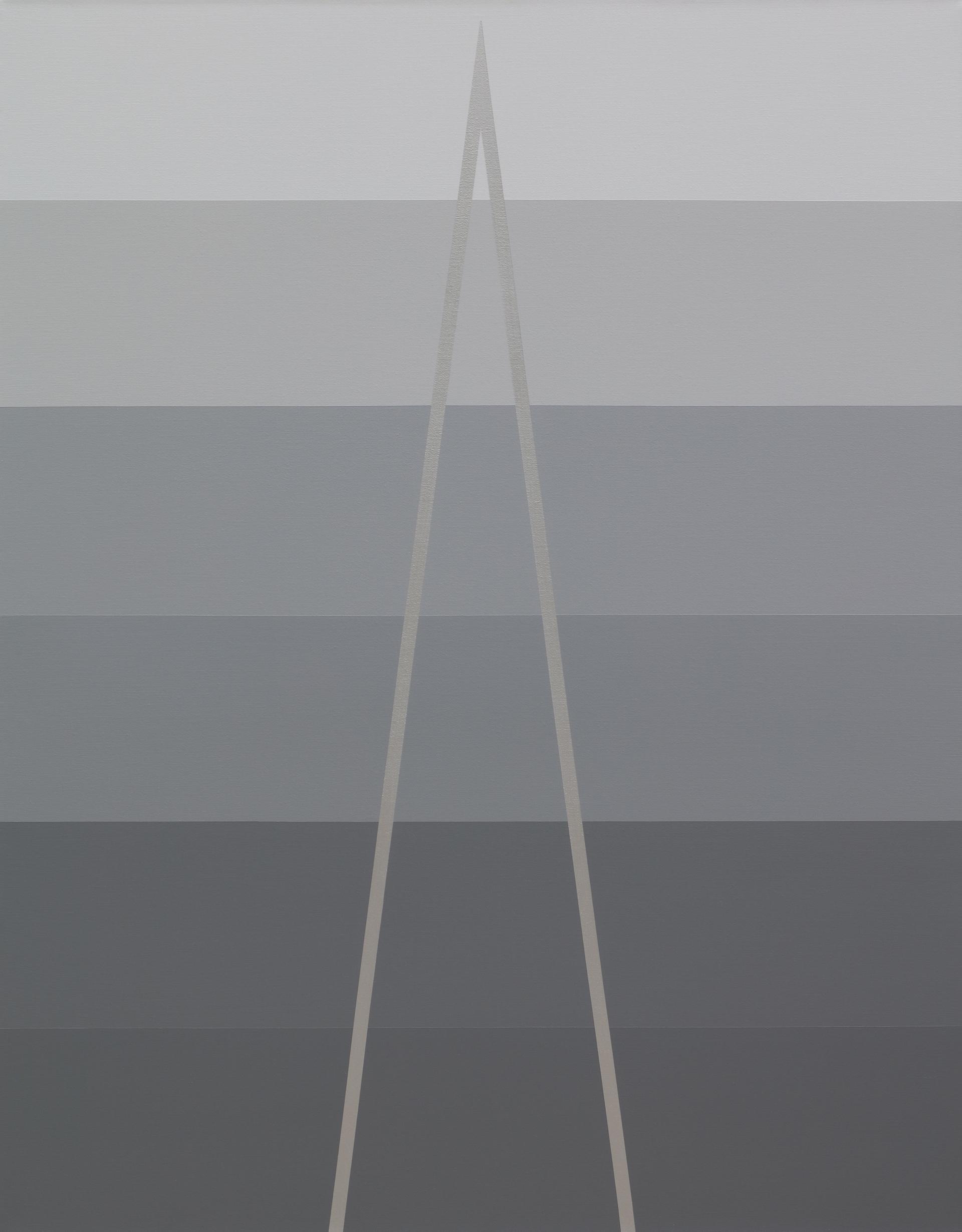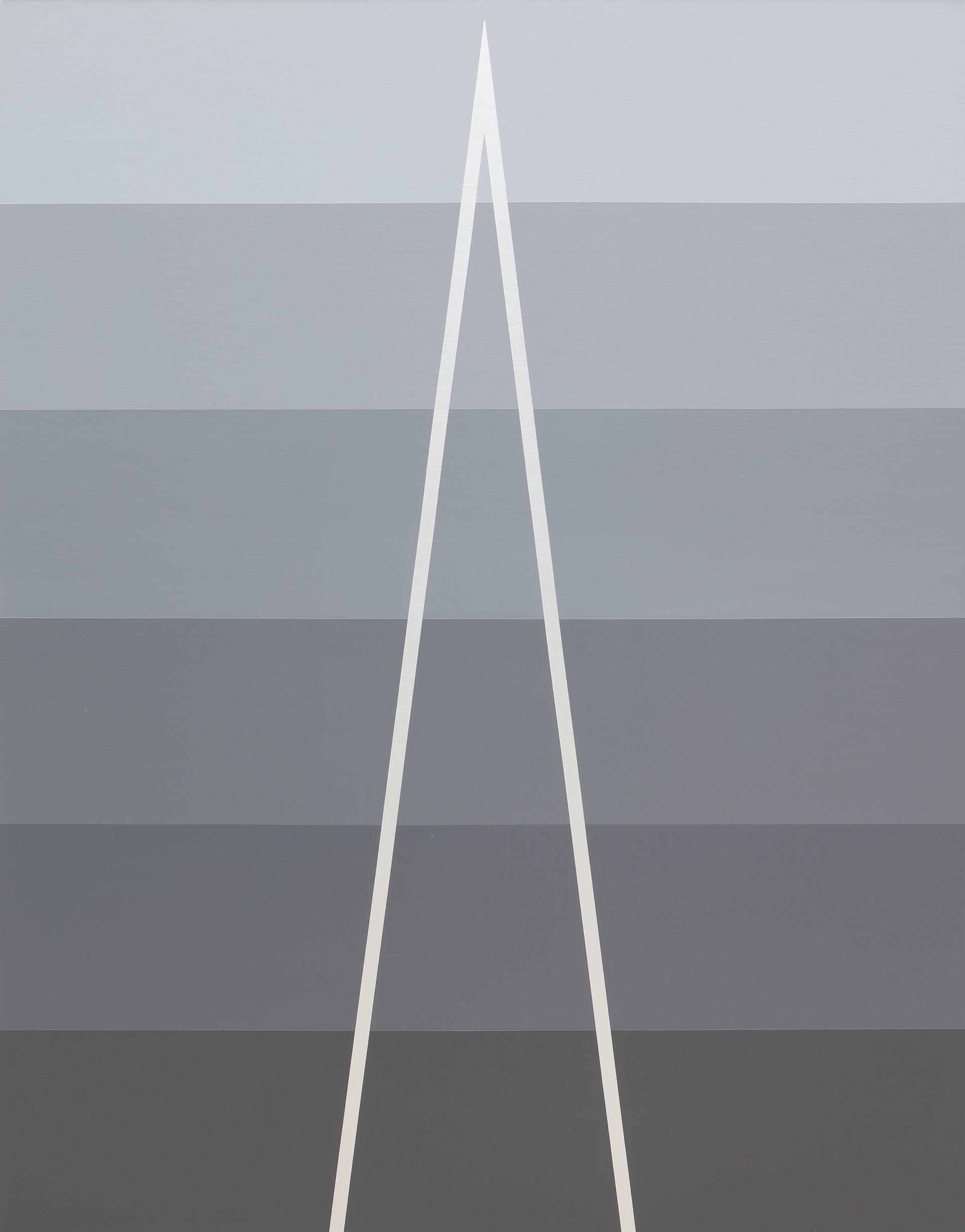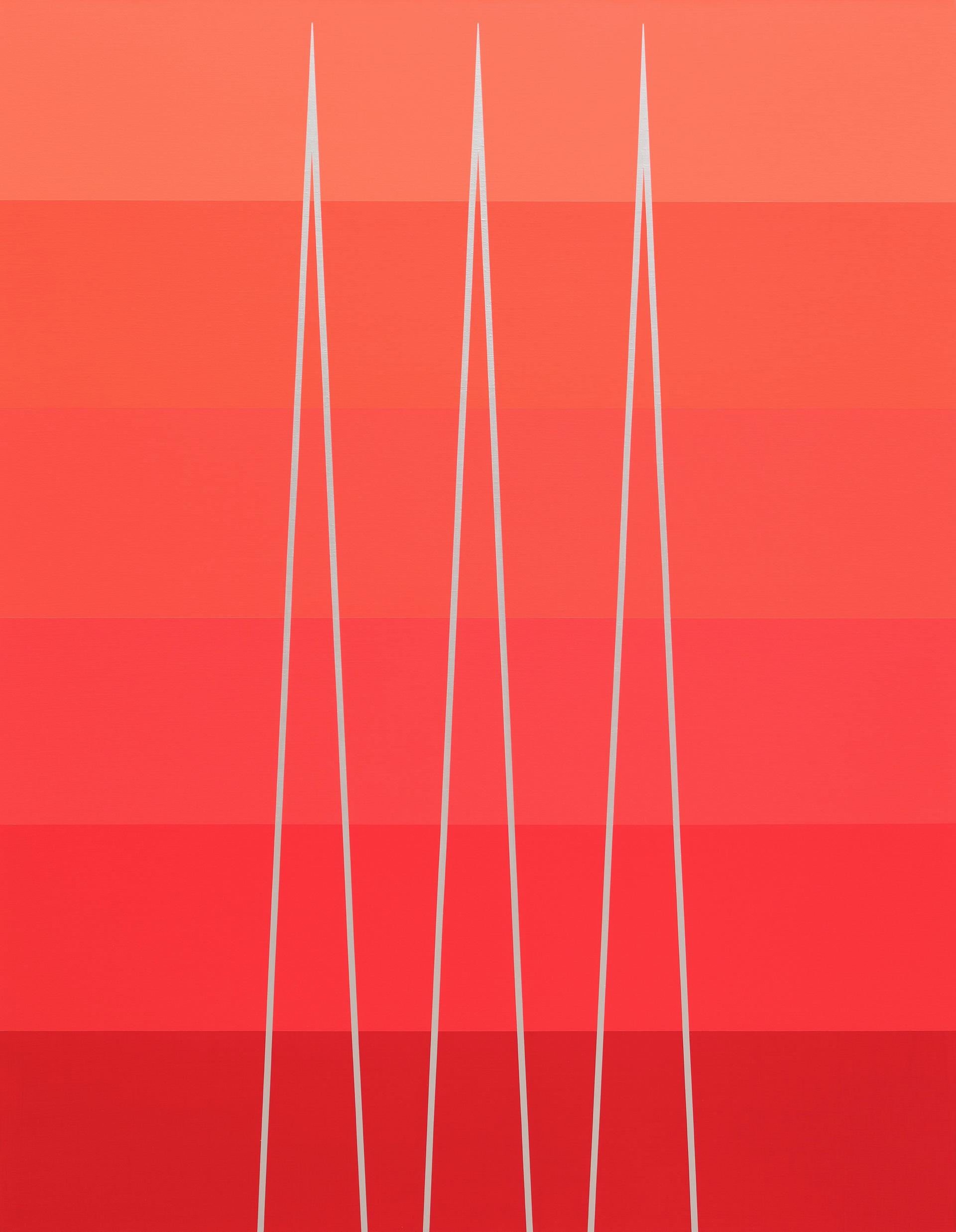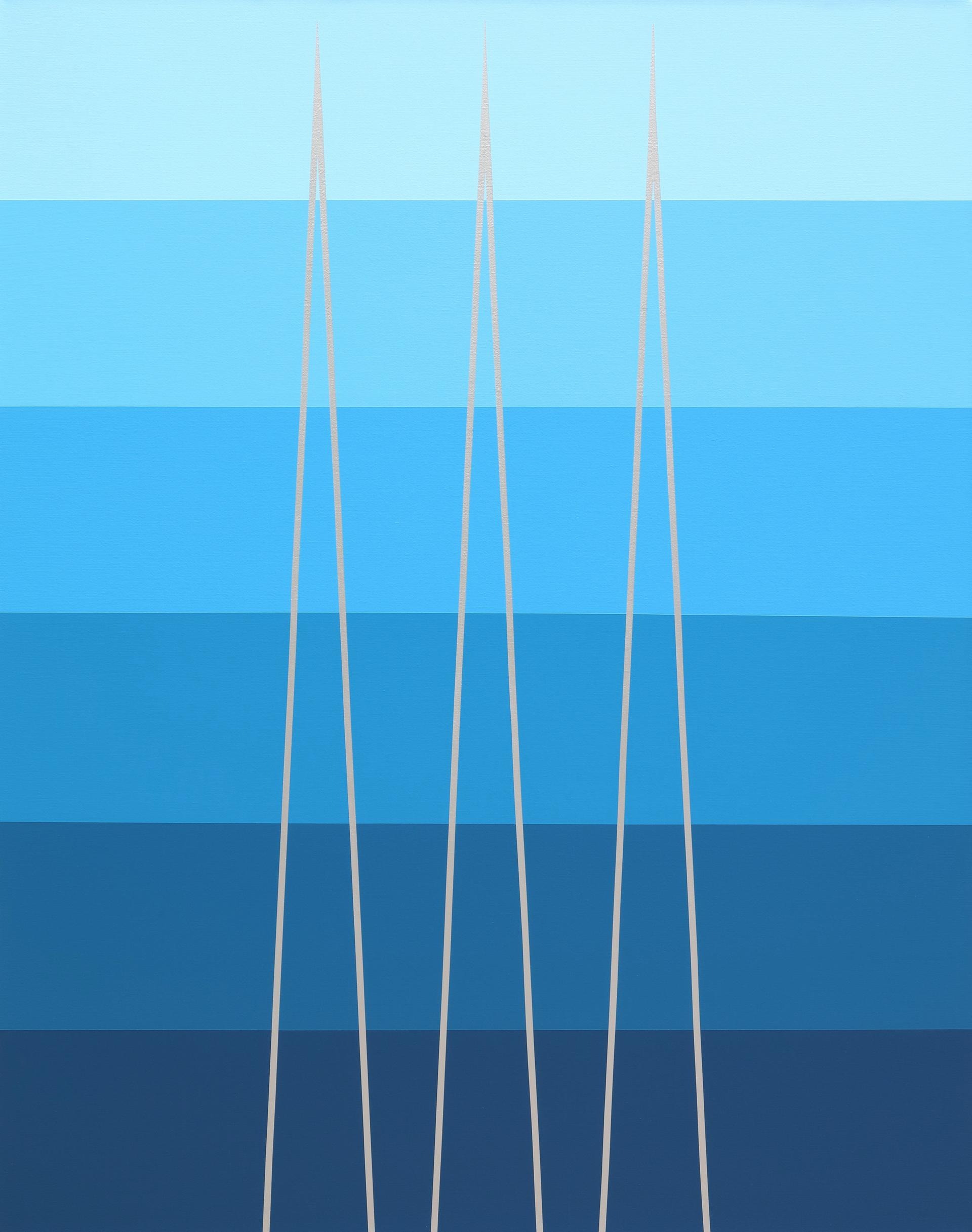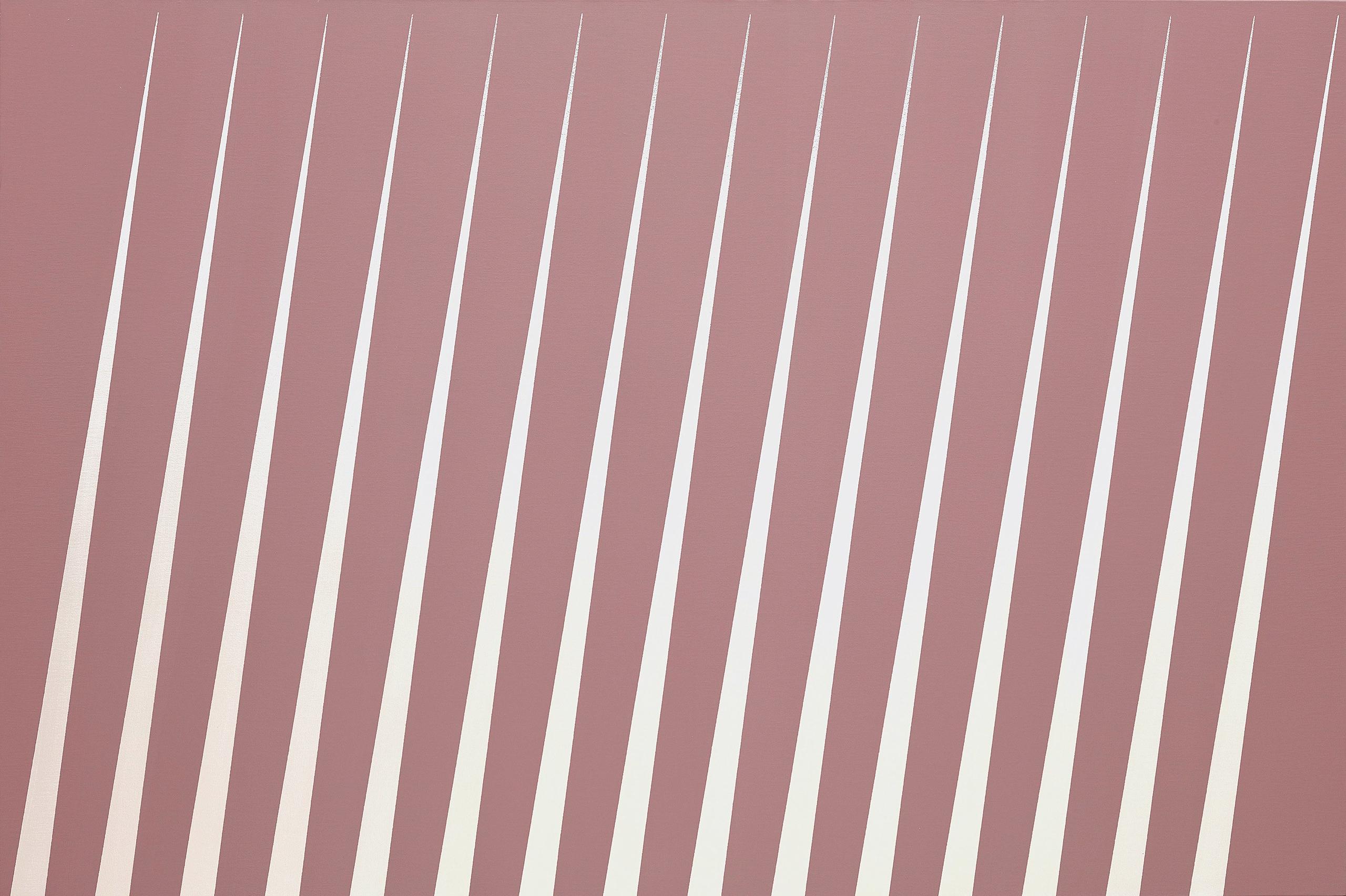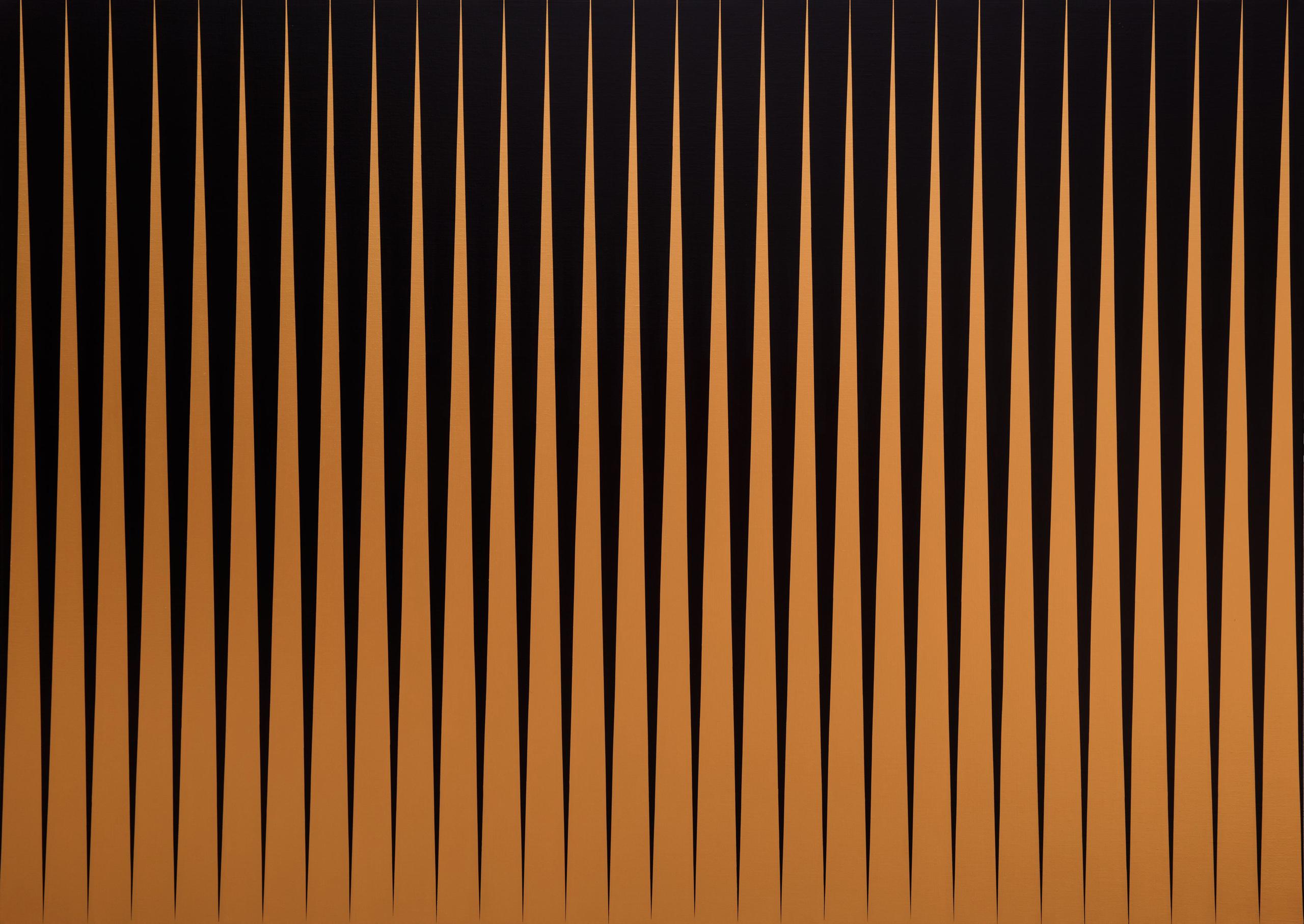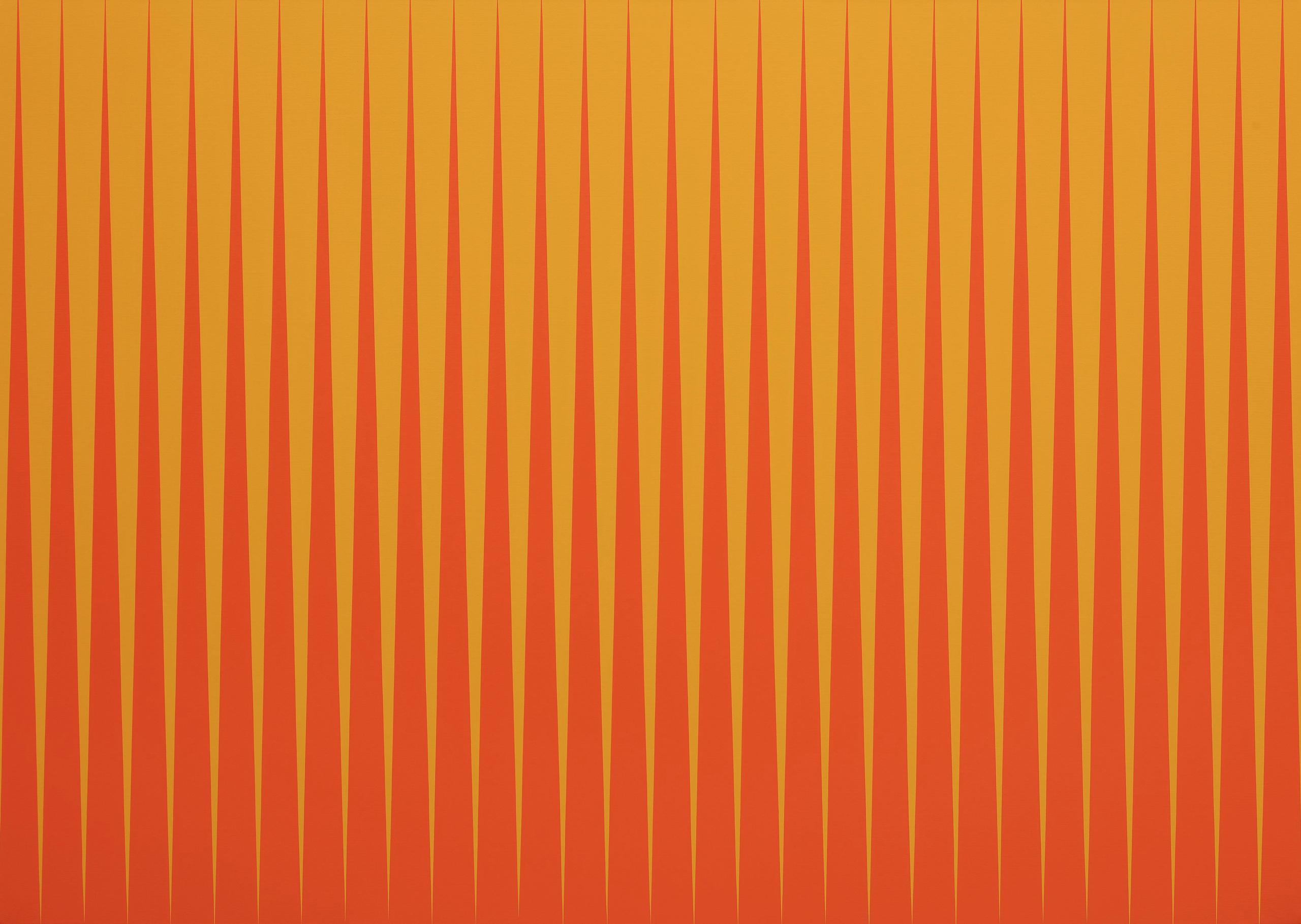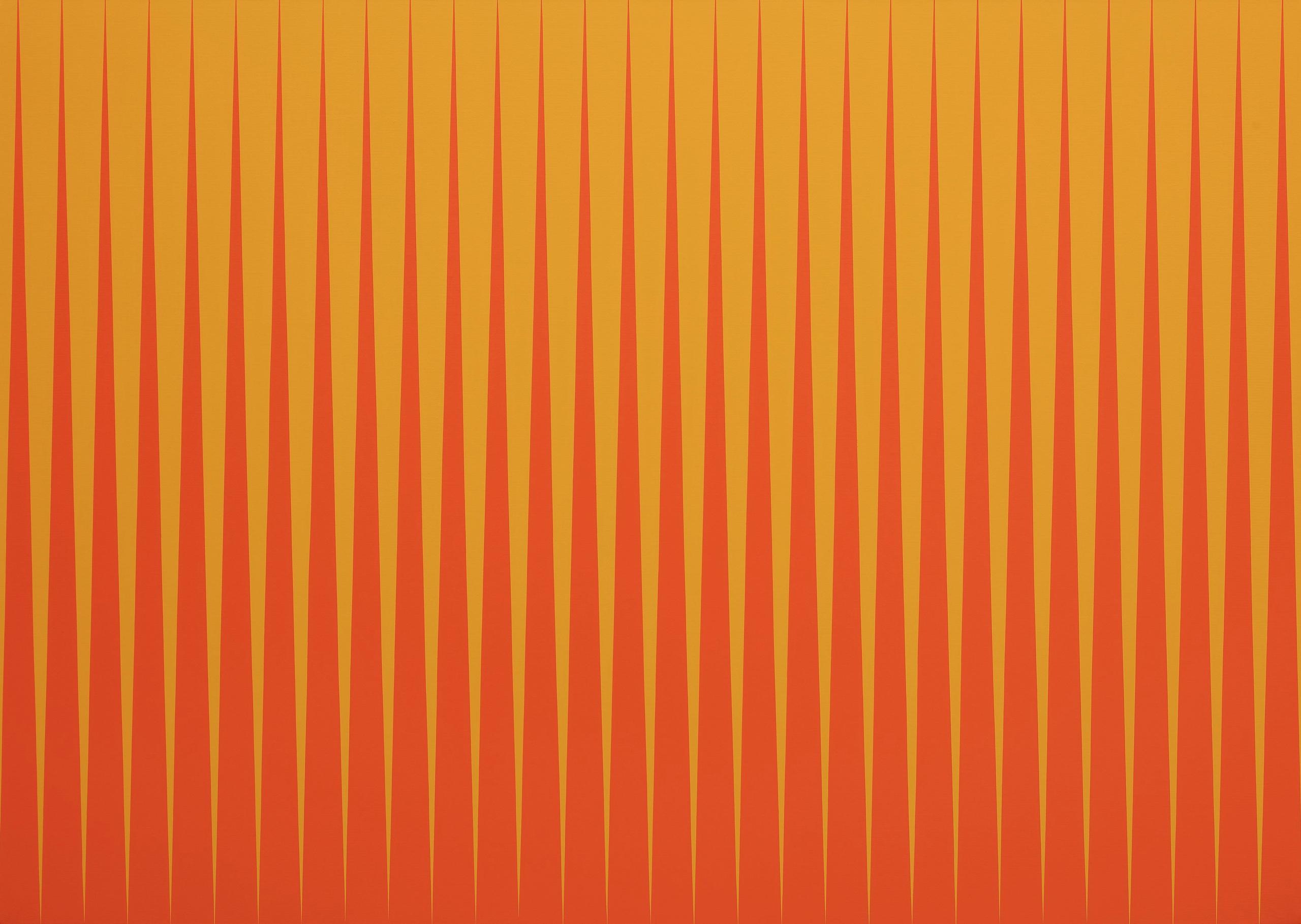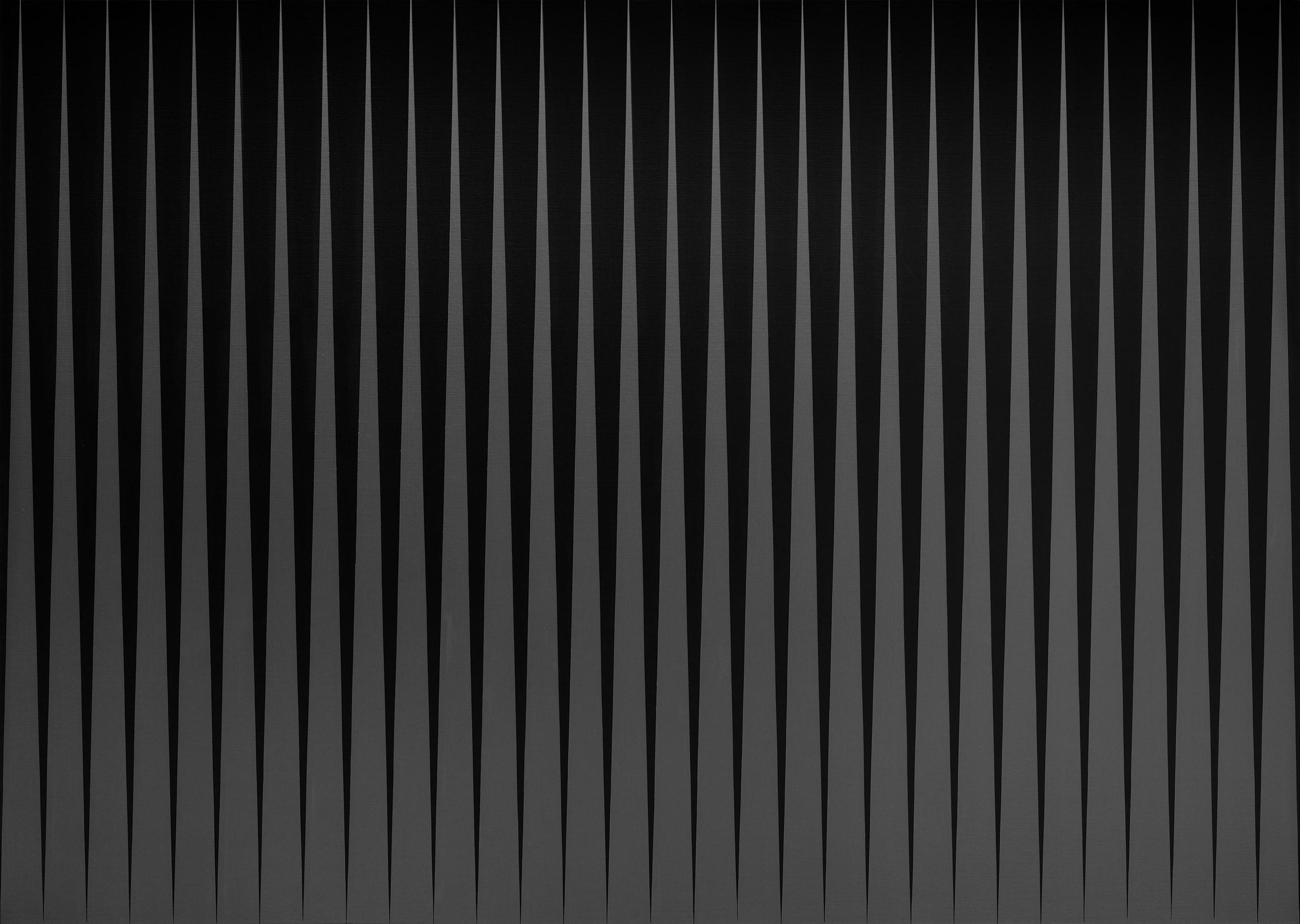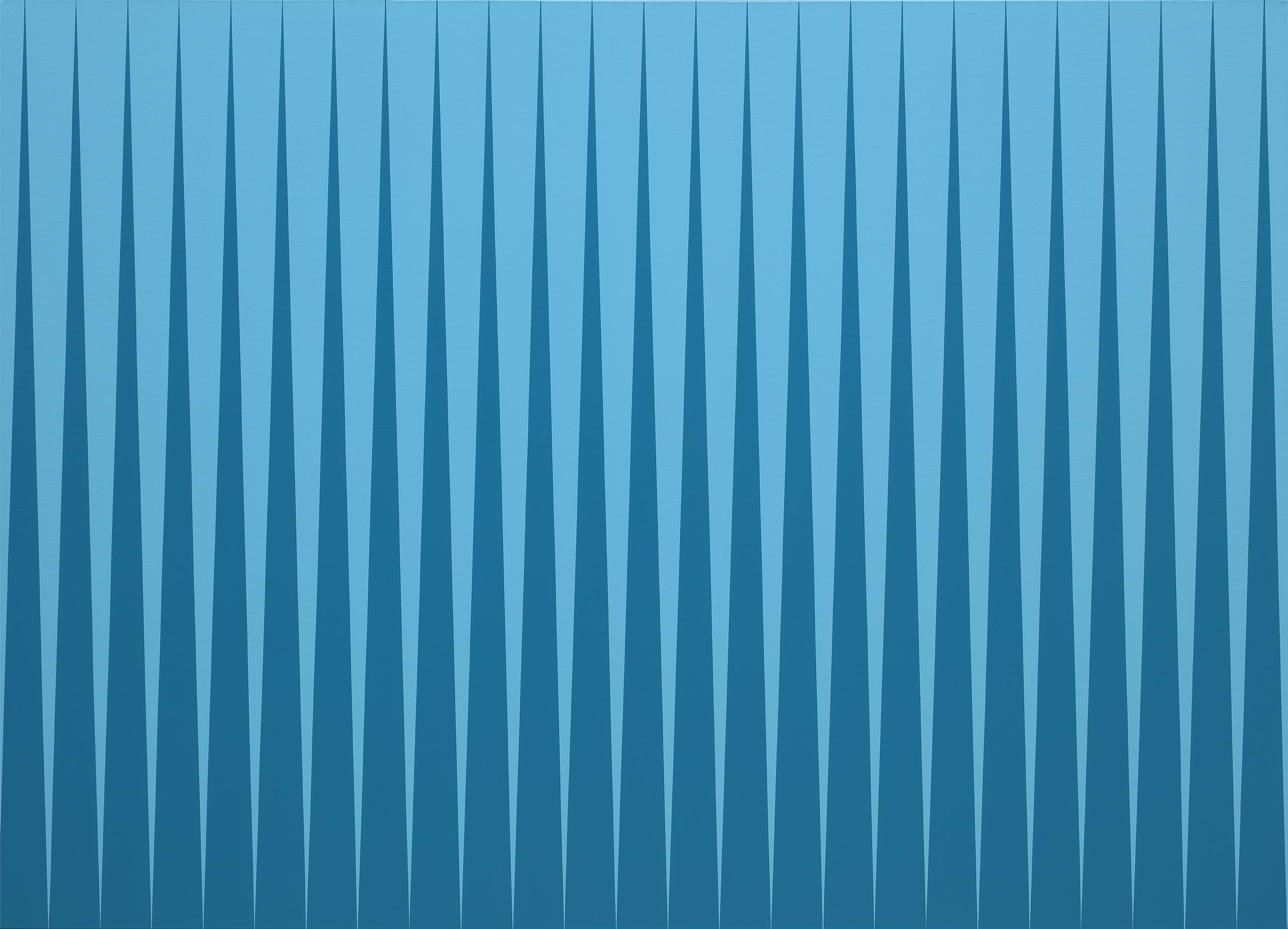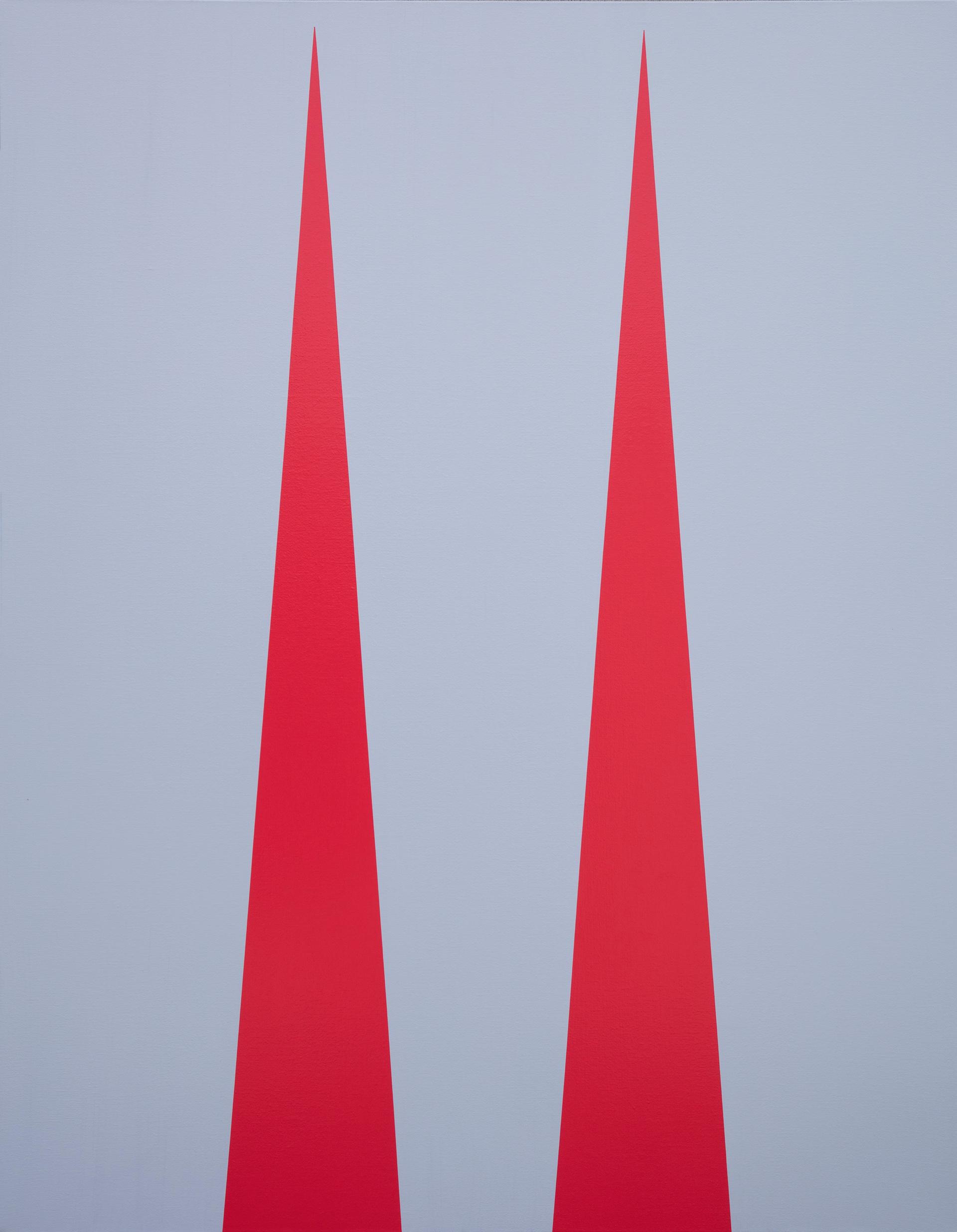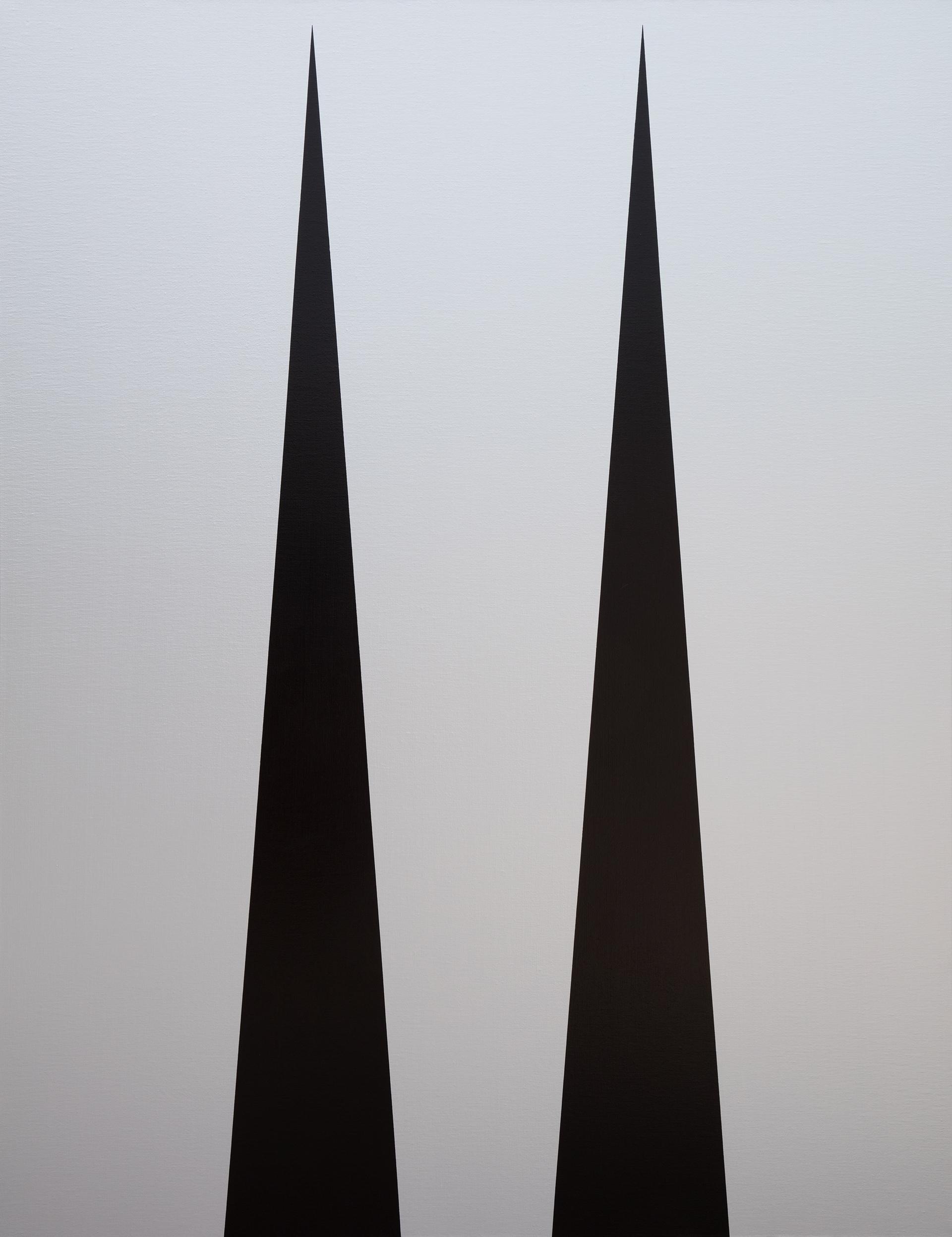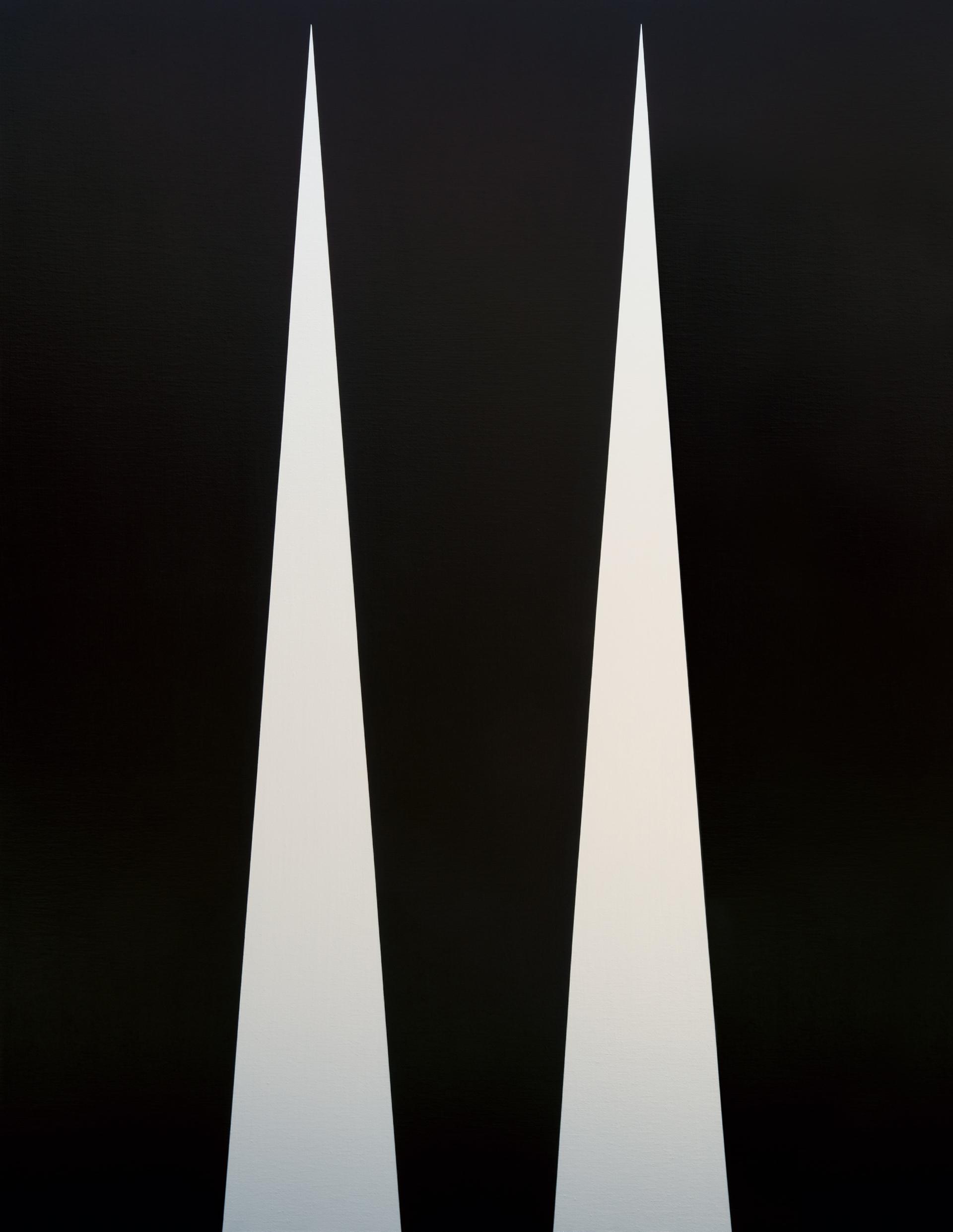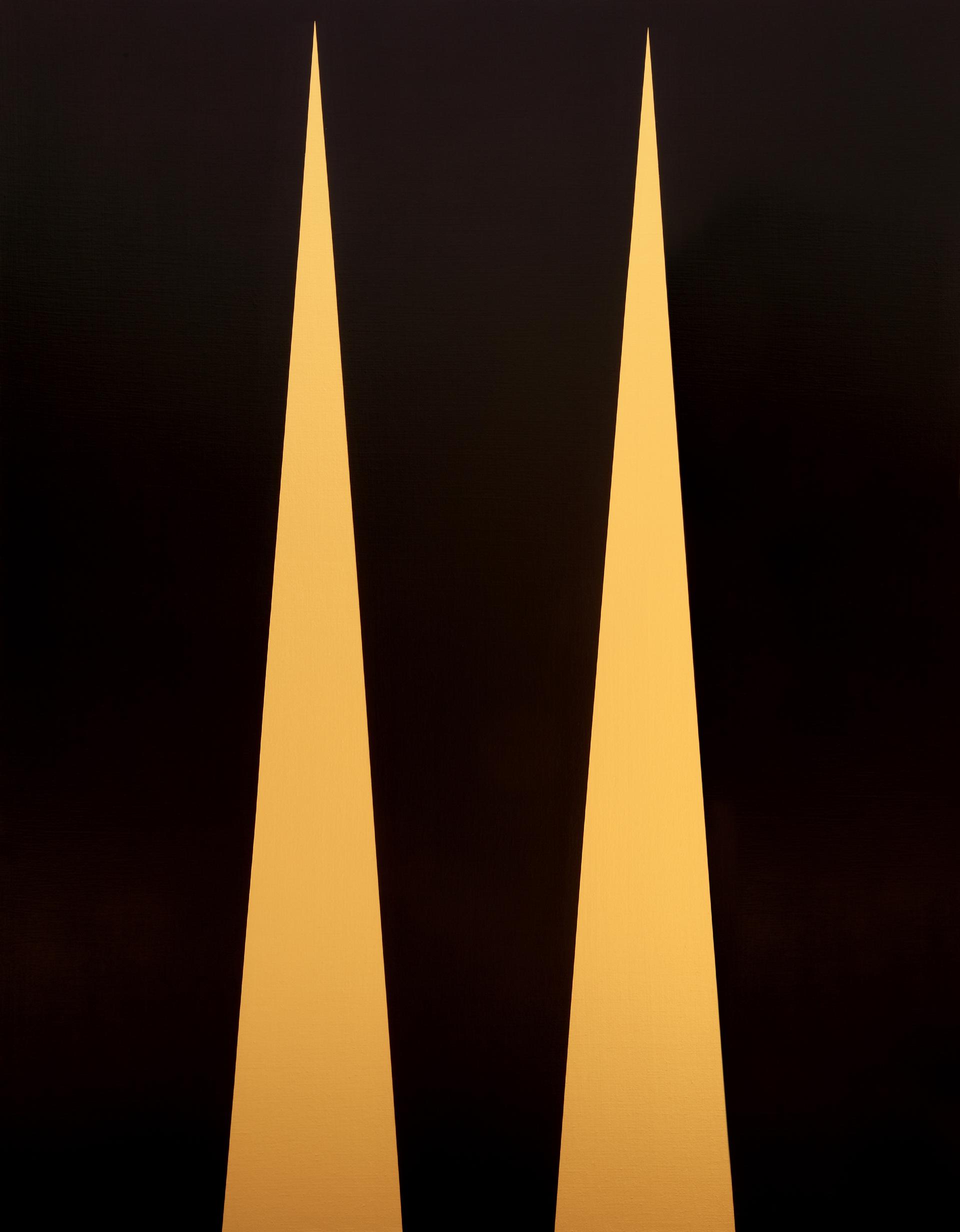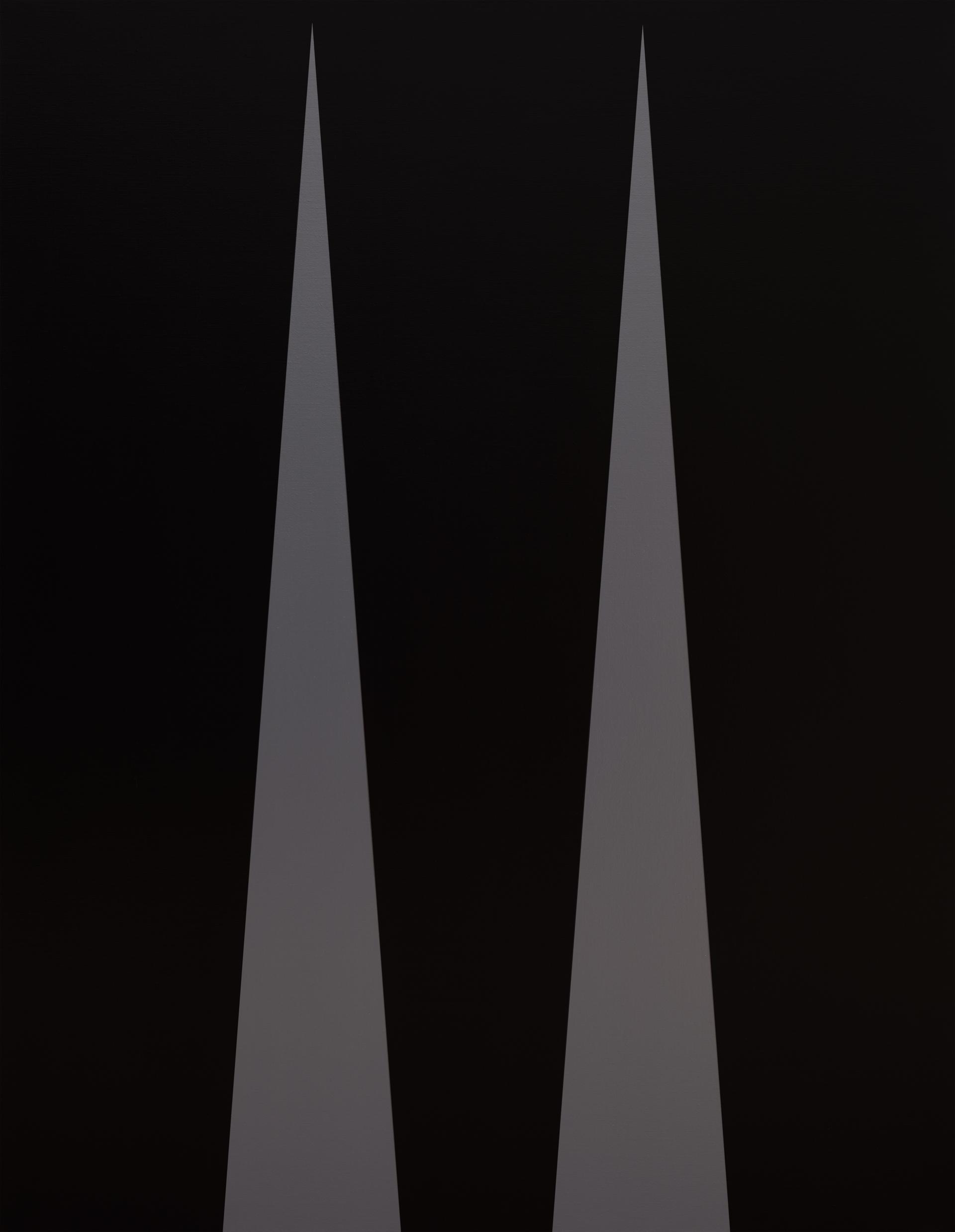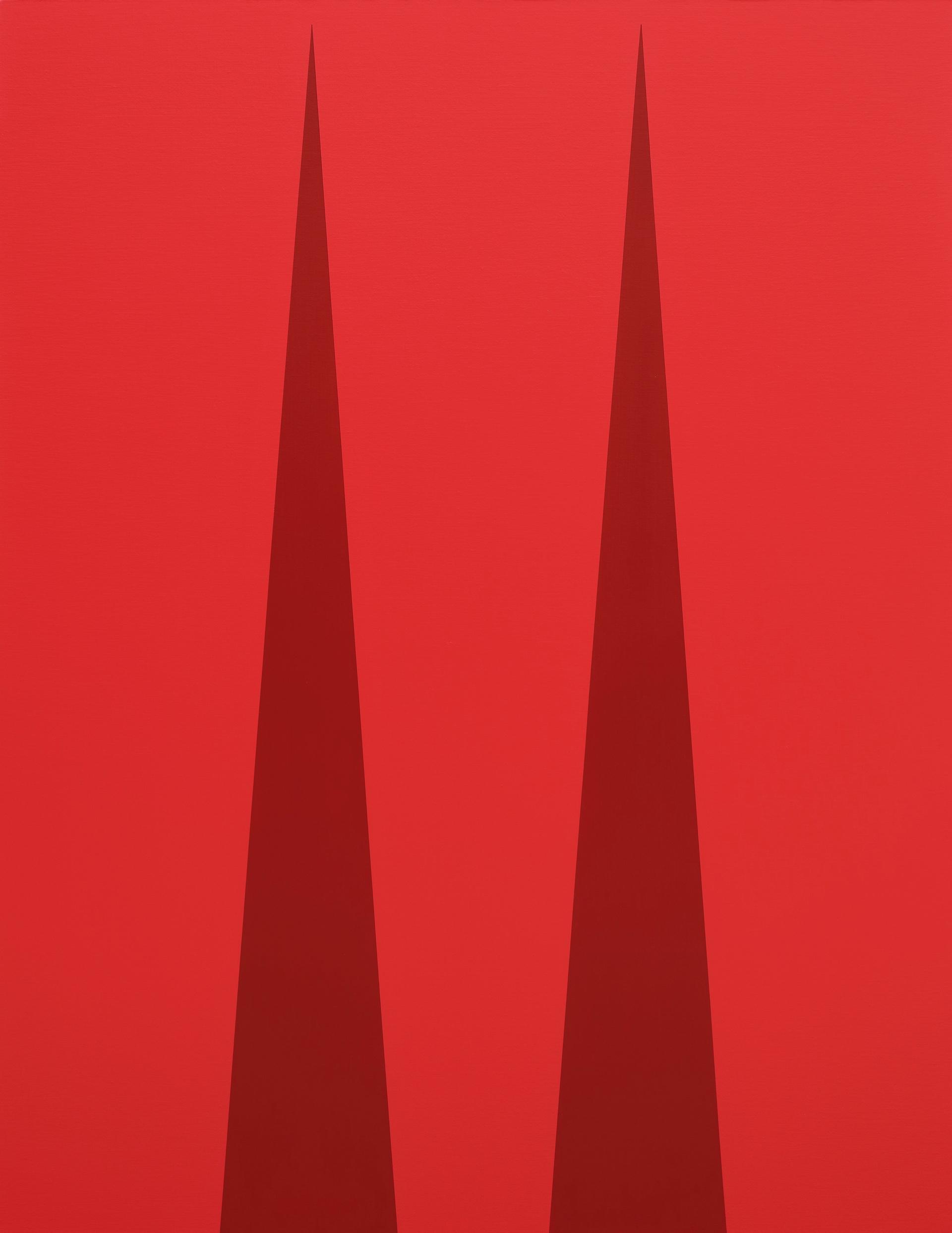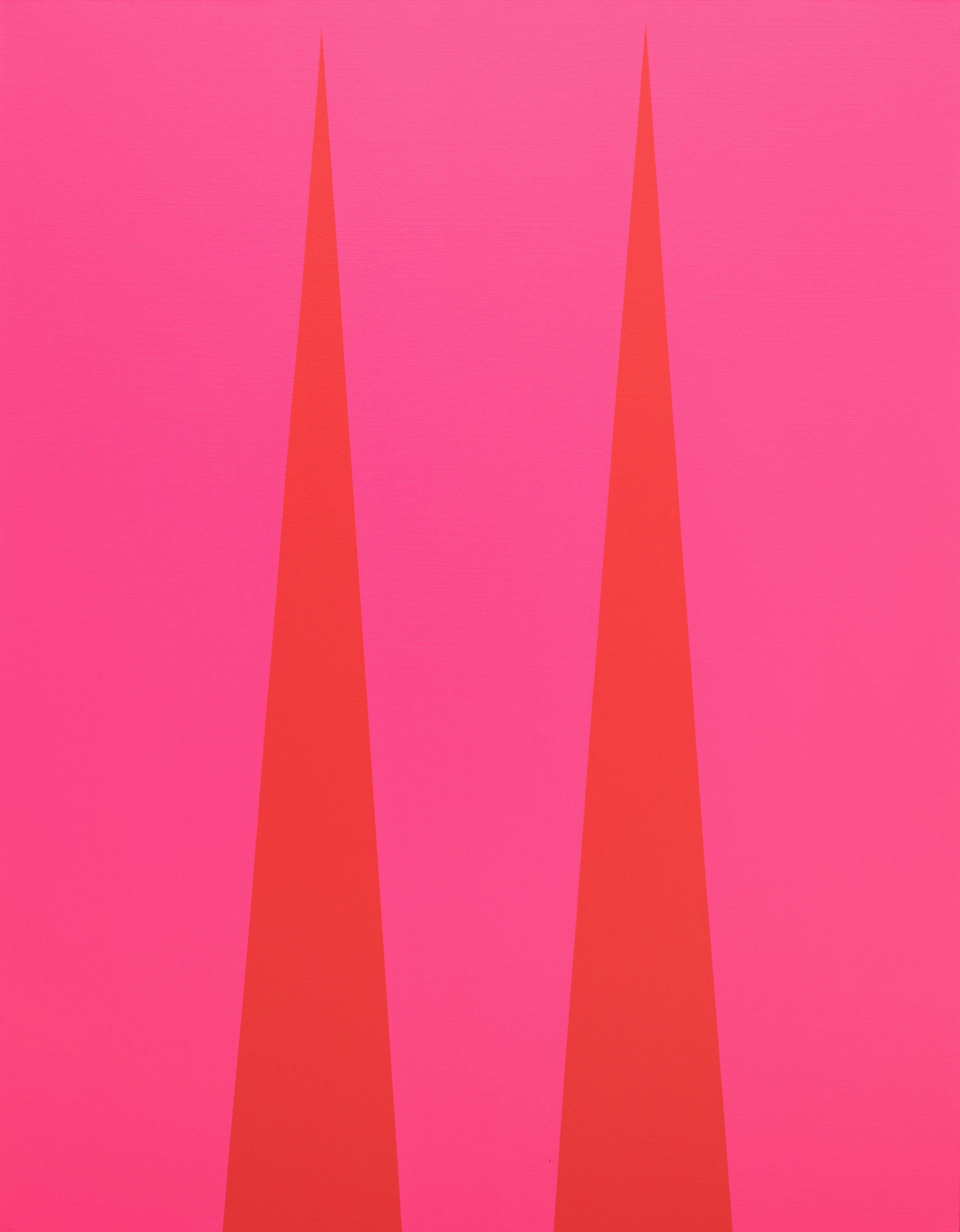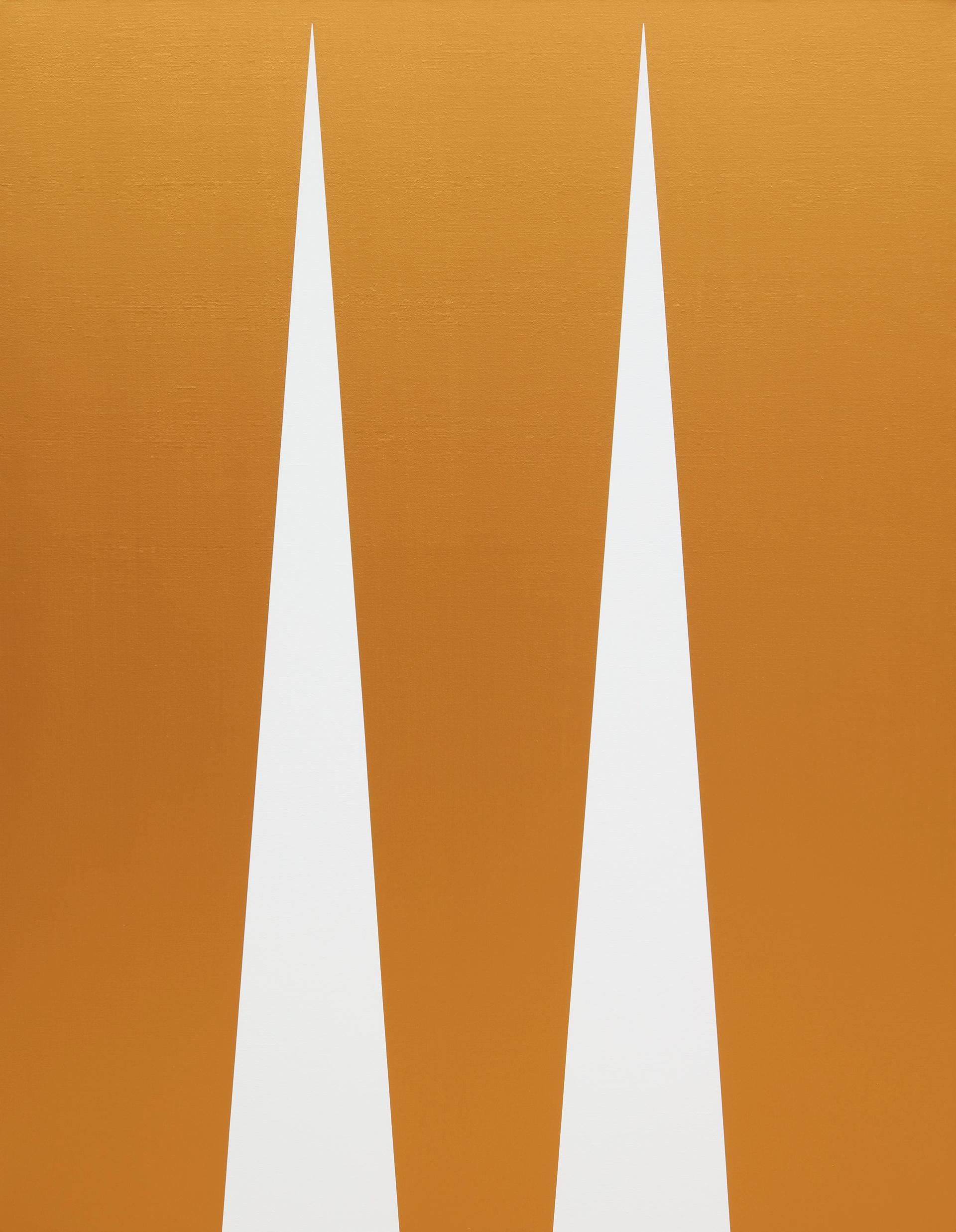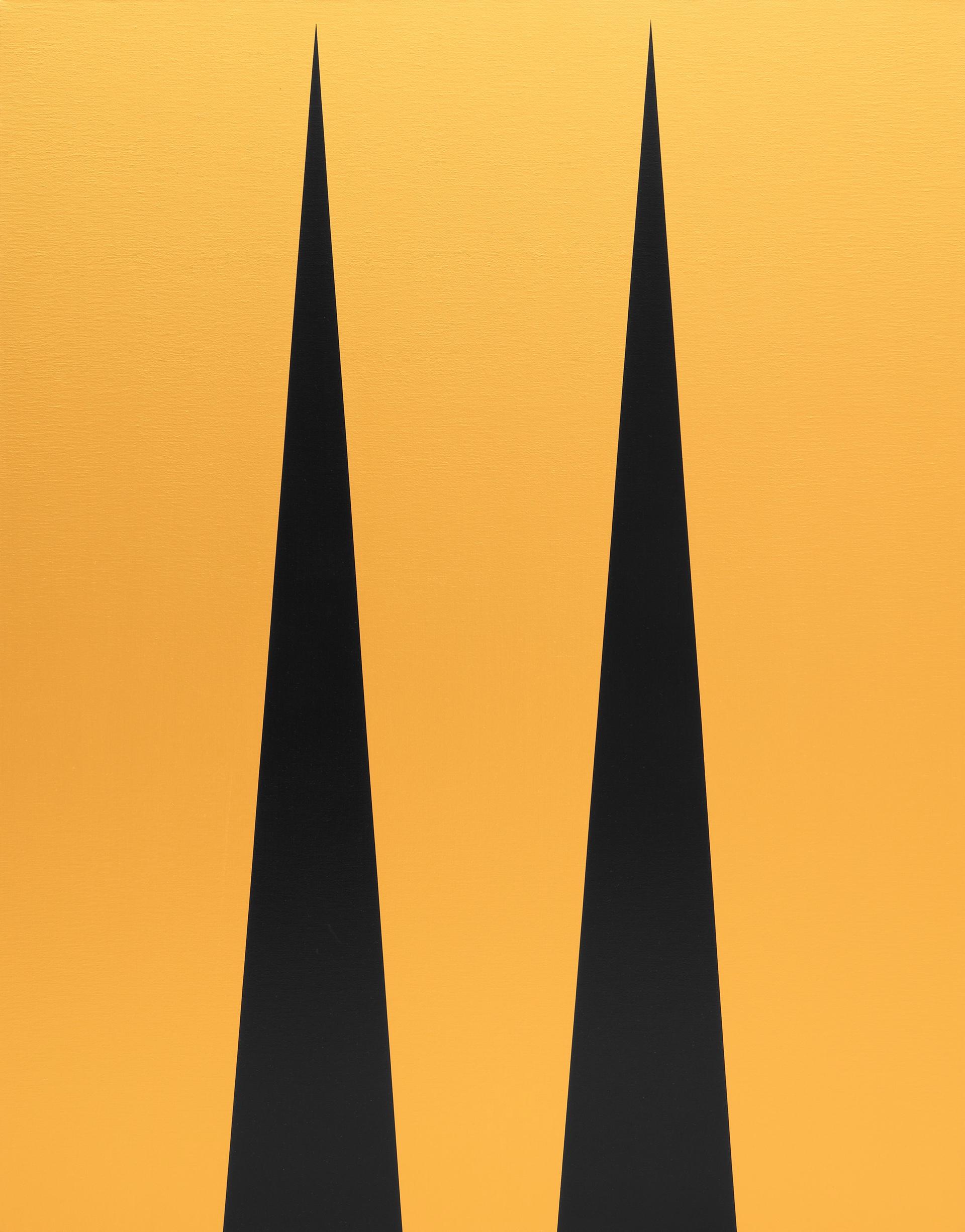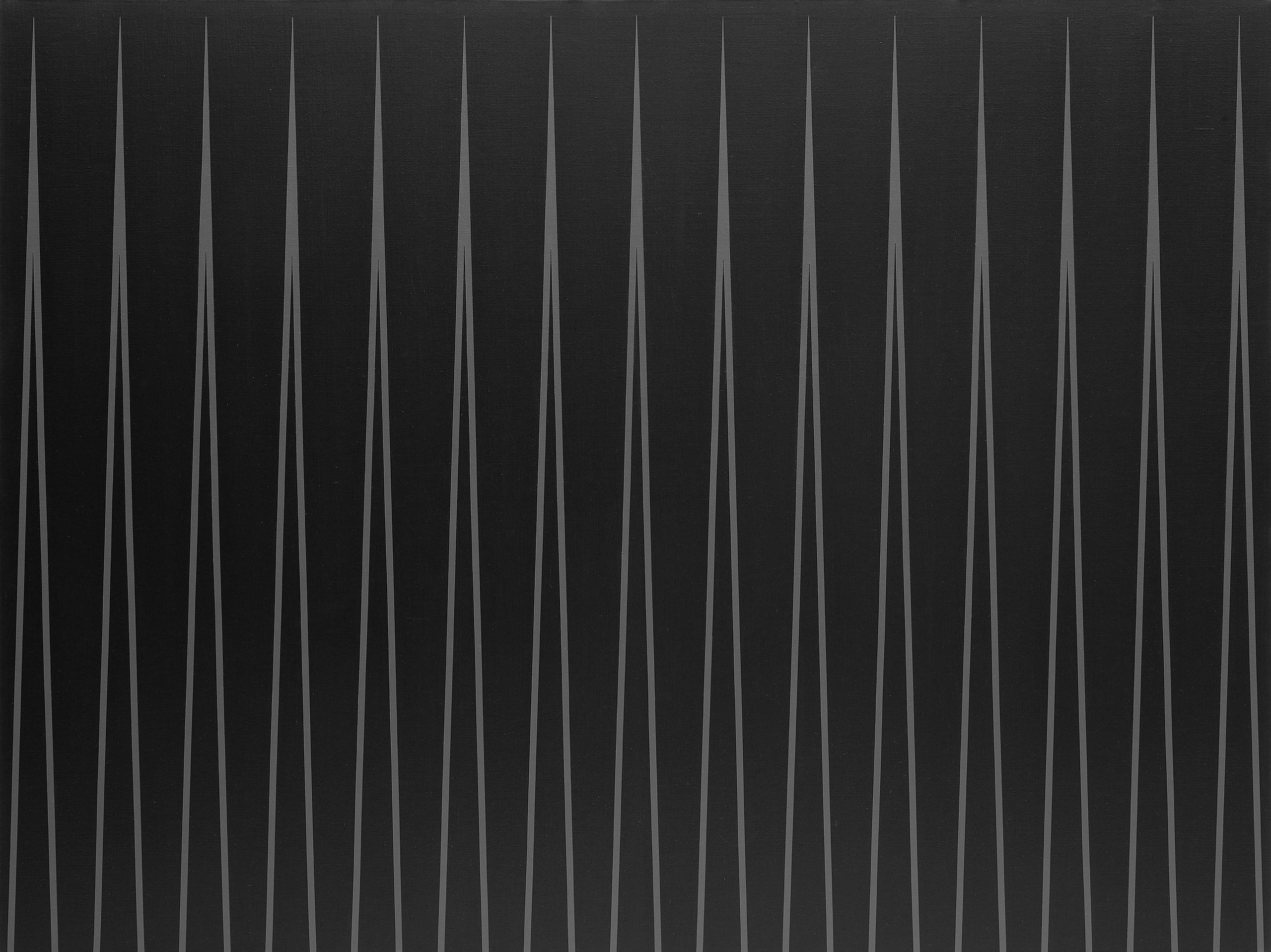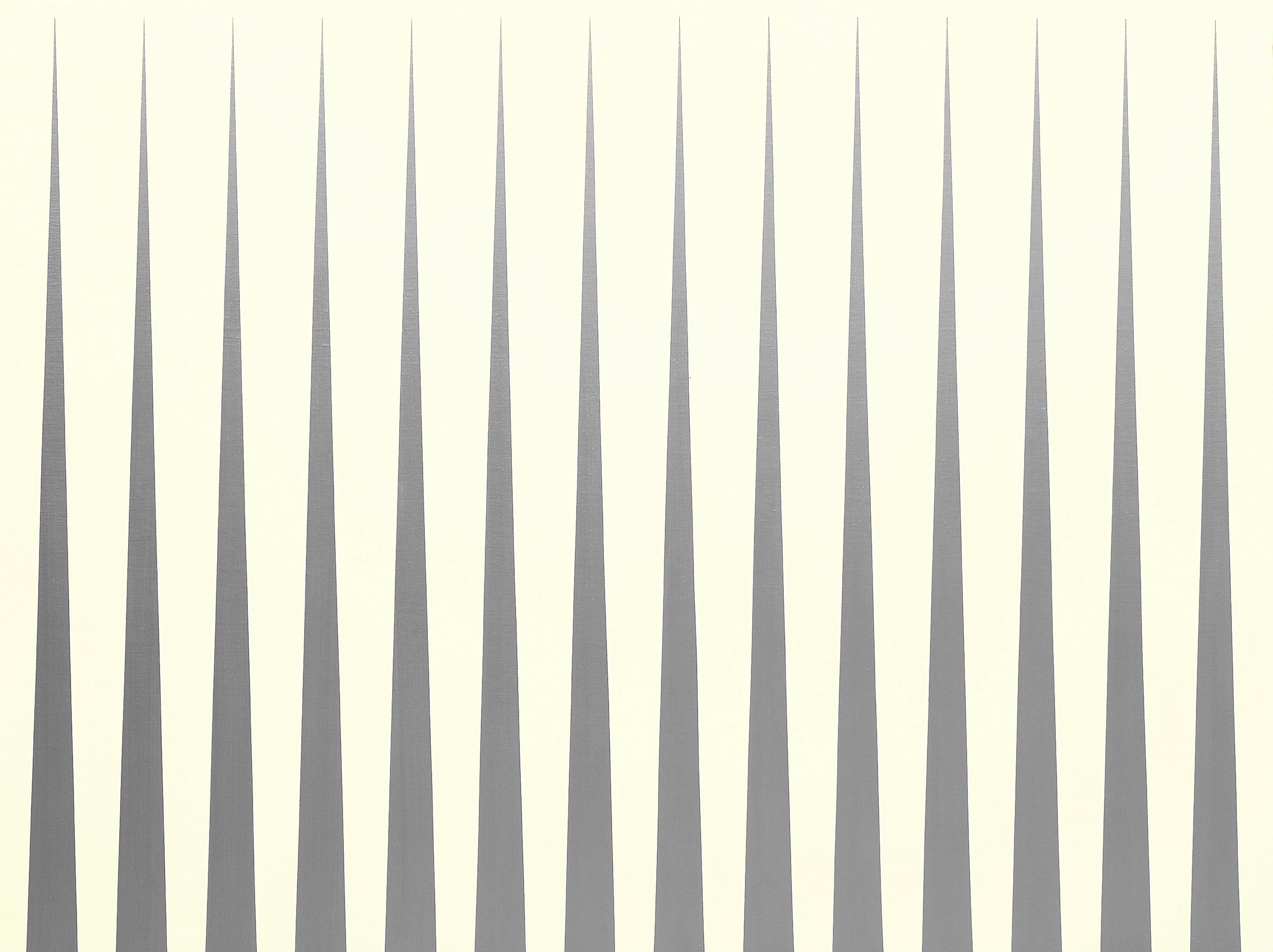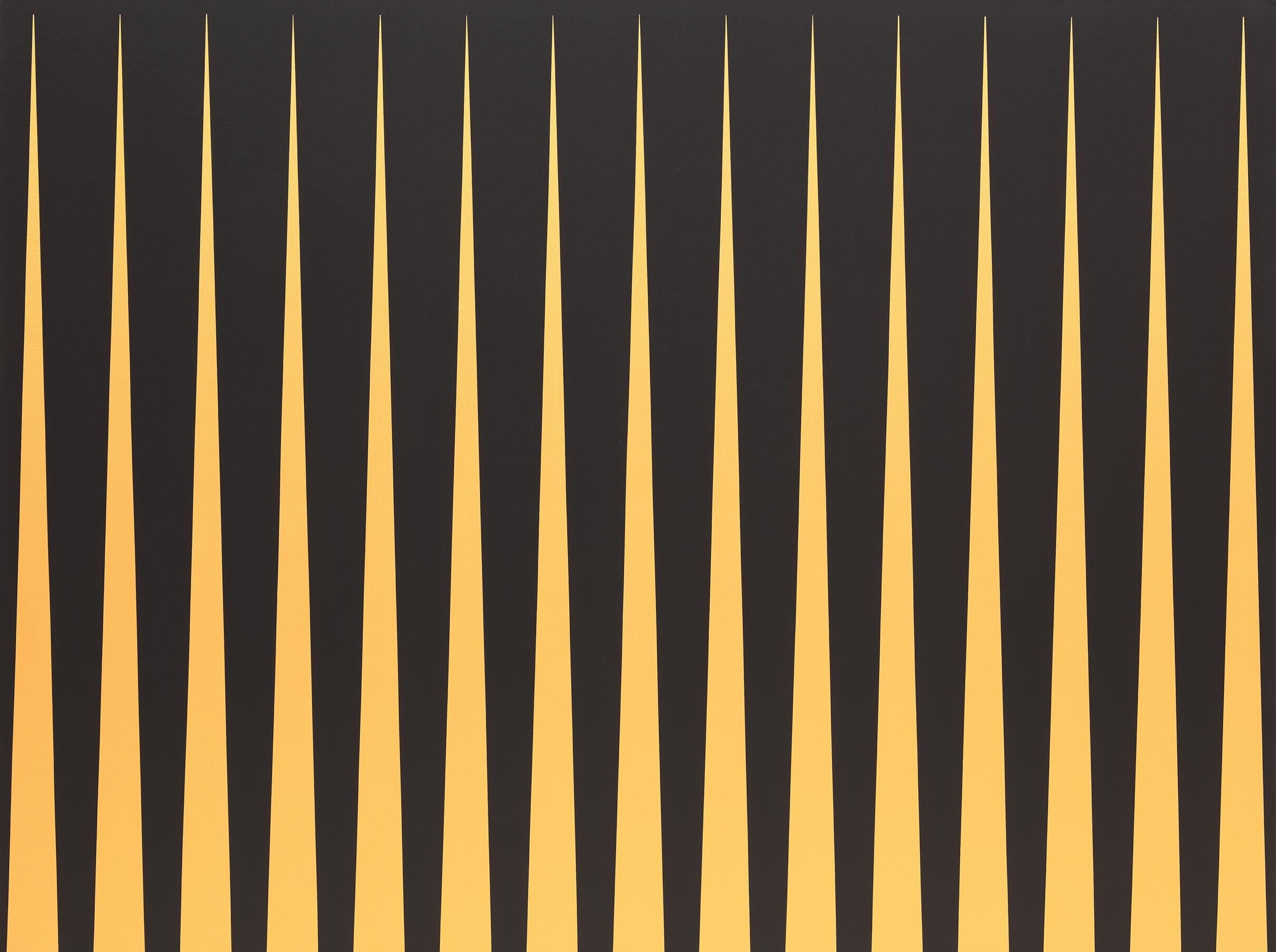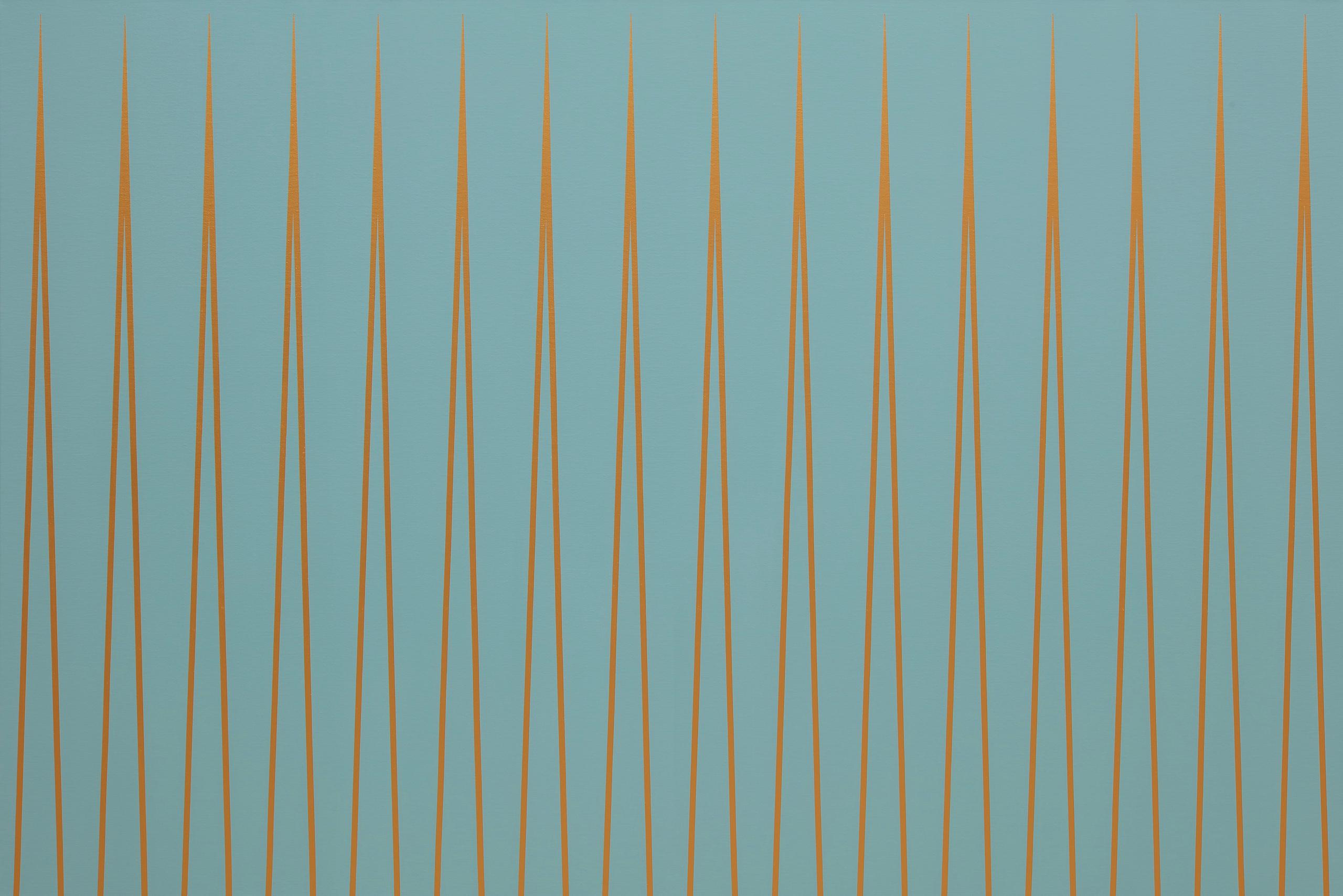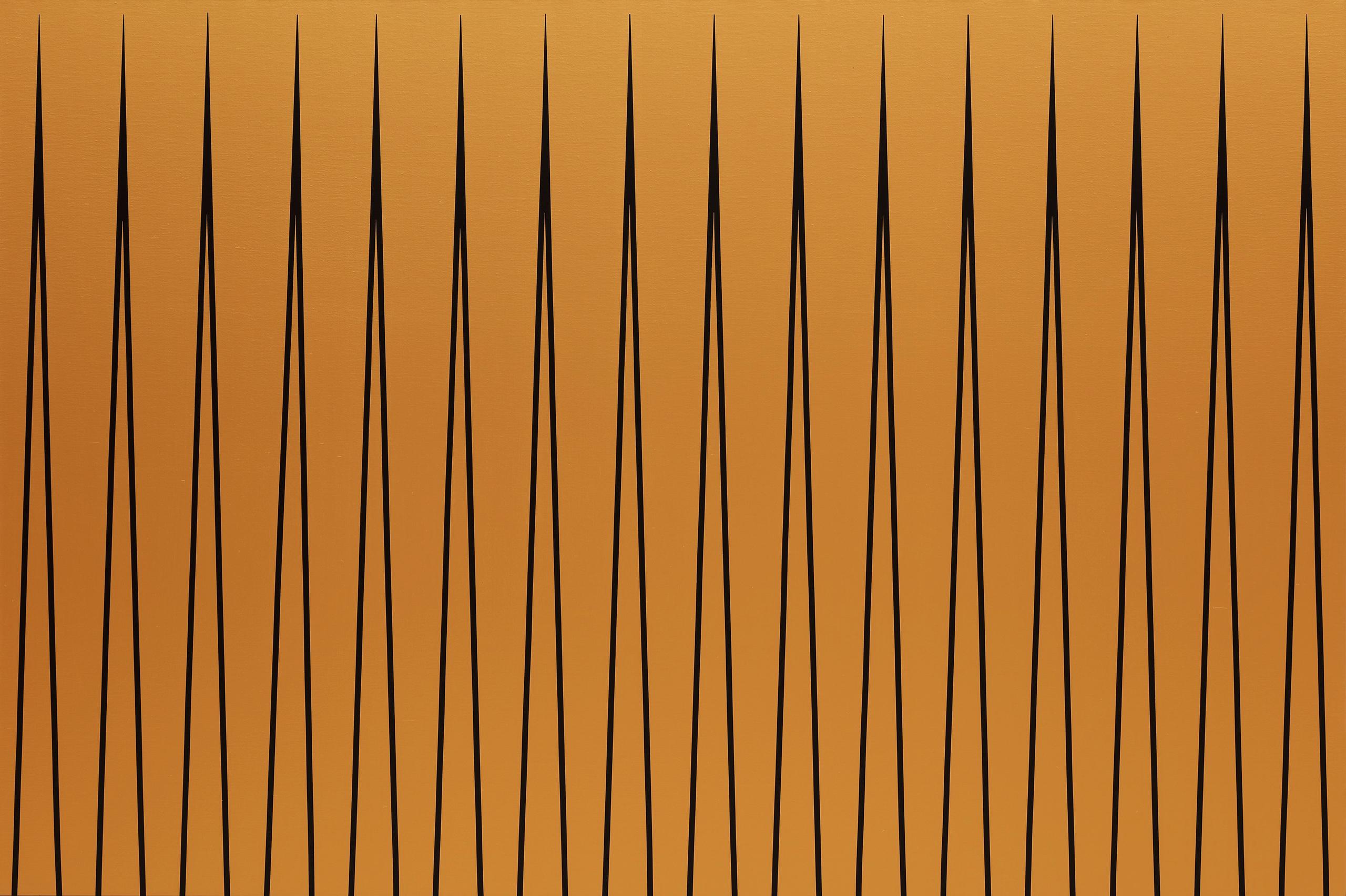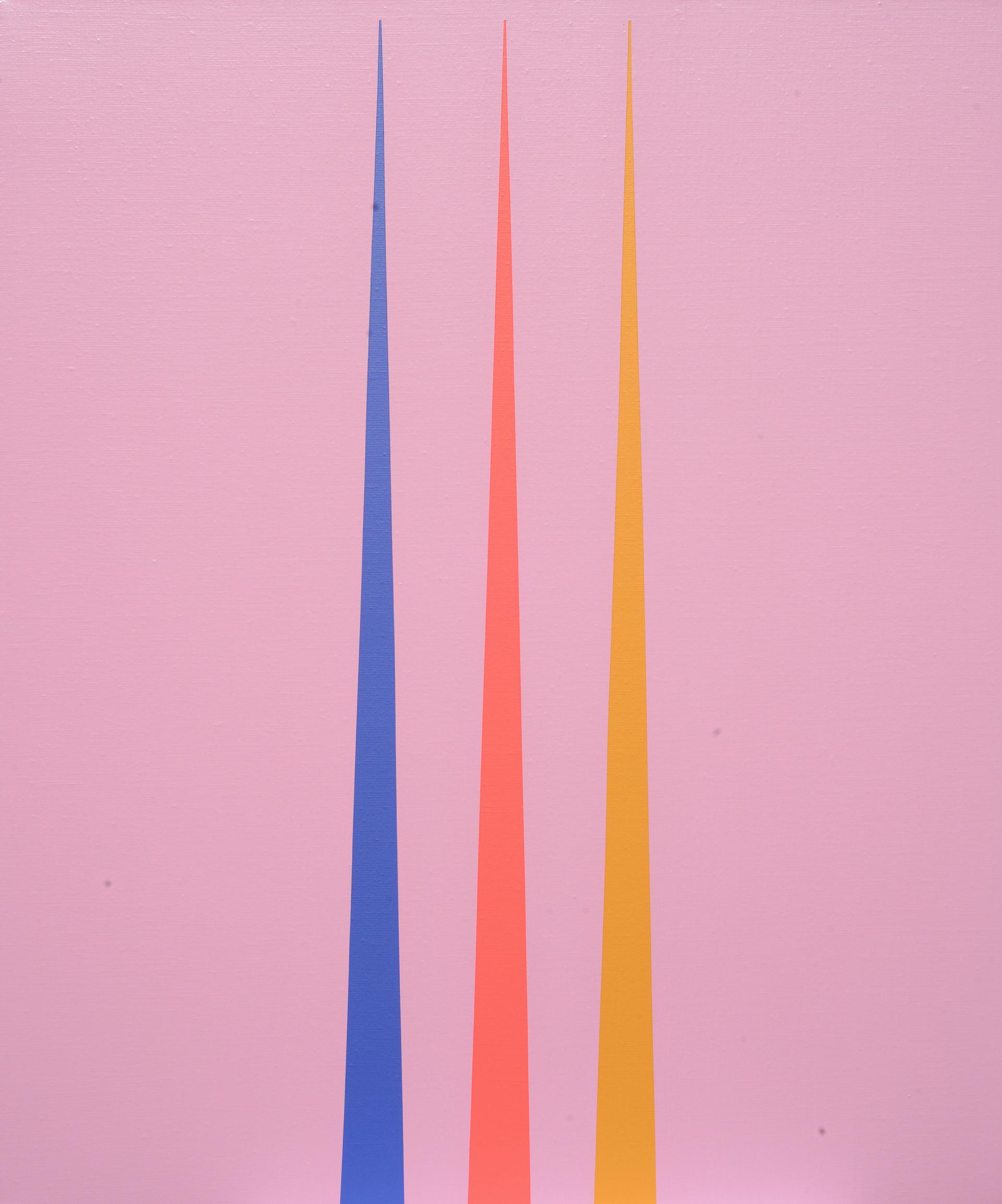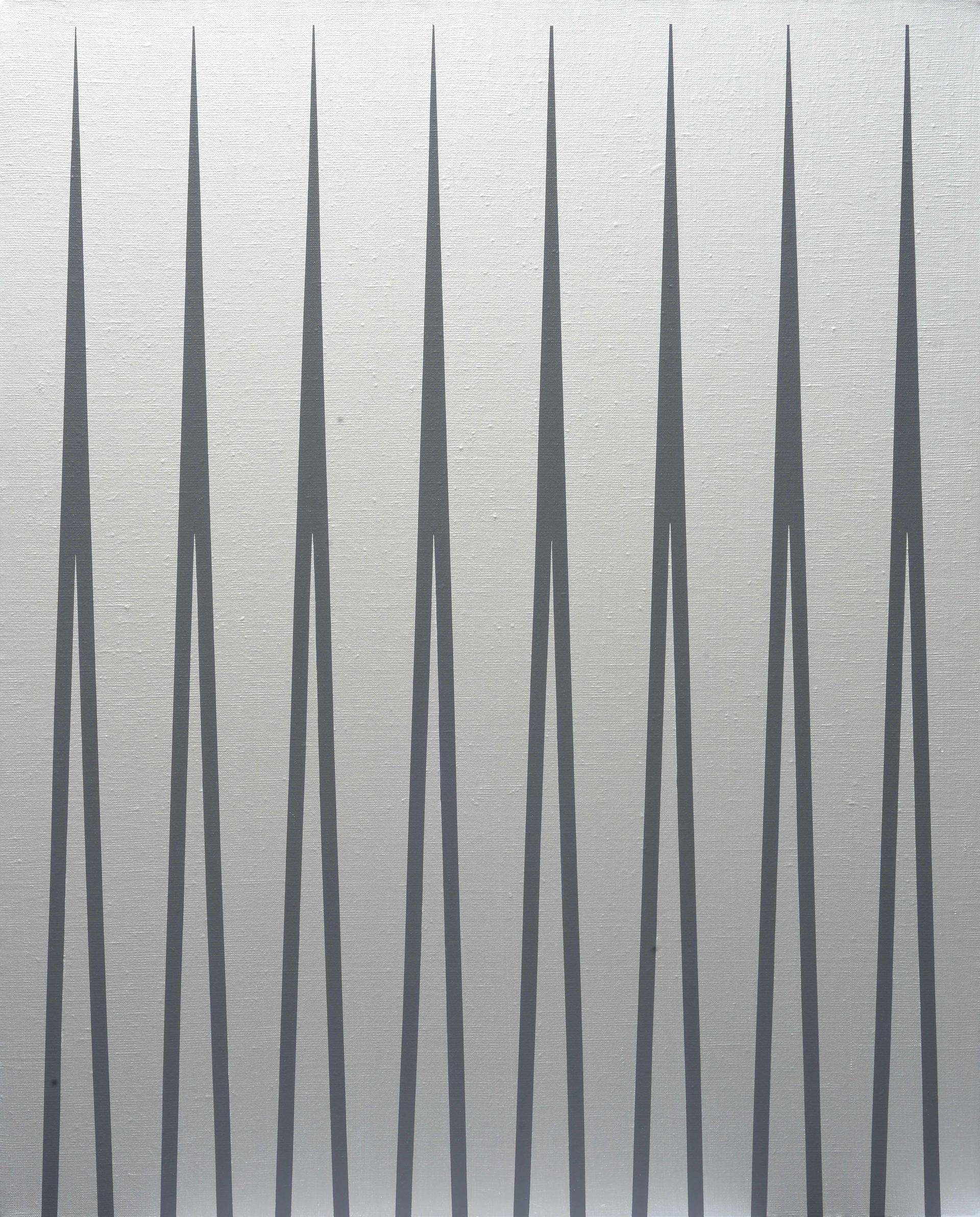Grass Style
Grass Style takes the form of grass as a theme, using extremely simplified geometrical forms to create abstract compositions. The “ Grass Style ” series incorporates Eastern concepts of nature. Taking China as representative of Eastern countries, from ancient times, inclinations towards symbolic expression became tradition, as compared to the use of realism in depictions of nature. If one considers pictographs as representative writing, then based on this assumption, calligraphy is a form of artistic expression.
Ju Anqi’s works use this kind of “calligraphy” as a foundation. But his works are not following calligraphy. Derived from the spirit of calligraphy and literati painting, the forms and content evoked are, nonetheless, essentially contemporary. Taking grass as a motif, the works use extremely simplified geometrical forms and limited colors to create abstract compositions.
Ju Anqi uses gold, silver, black, gray, yellow, white and a small selection of other pure colors, spreading them in glossy layers over the canvas, using sharp contours to express the shape of the grass. In Ju Anqi’s paintings, one finds a simple, perfected beauty.
–Yin Jinxie (Curator of Gwangju Biennale/ Critic)
“Where the wind passes, the grass bends” or “not the wildfire”—grass, in the context of traditional Chinese culture, corresponds to a top-down view and is an expression of life. One can imagine the position of grass in the natural world, but in terms of humanity, it reflects the hierarchy existing between people: the way of the saints is but a pile of millet, portraits of life with faces cast in shadow. Grass represents life at its lowest levels, yet even so, in certain traditions, the grass known as “thoroughworts” reflects a dejected political life. However, in Ju Anqi’s works, “ grass ” has a completely different image. It no longer seems as a group of individuals who hang downward as if cast under some heavy weight. Even more so, his grass does not appear to be a lofty, self-pitying symbol. What we see are merely pointed edges given to life, like thorns.
Although, the style of the “Grass Style” series reflects minimalism, Ju Anqi is not exploring the formalistic logic of Western painting. Ju Anqi’s“grass”is an adaption. The methodology he is adapting arrives from the fermentation of modern thought in China. Ju Anqi gives his understanding and expression of life a classically modern visual form. Thus, the seeming affinities between “Grass Style” and “calligraphy” in actuality arise from two different culture systems, but as an artist, Ju Anqi attempts to reduce life itself into a perceivable form. In a sense, this is meaning of modernity for the public.
That is to say, the multivalent meanings of the “Grass Style” series, along with its classically modern visual forms, establish a framework through which to engage in thought and discussion of the legacy of modernism. The subjectivity of life exceeds the ravine dividing Chinese and Western cultural systems, becoming the common appeal of modern humanity regardless of its idealism or realism, regardless of its summoning of Enlightenment or its reflections on former Enlightenment. Ju Anqi’s “grass” is like a “man” caught in a freeze-frame of a “longing to become.”
——Sun Dongdong (Independent Curator)
In his “Grass Style” series, Ju Anqi dispels with the boundaries between form and meaning, taking the form of grass and dissociating it from its fixed material properties and spiritual meaning, making it an uncertain symbol of the between-ness of form and meaning. The sharp image becomes a buffer between poetry and nostalgia, as well as contemporary superficiality and fast-paced contention. With a series of applied layers, the surface of the canvas contains many perceivable levels. The intimacy of nature is replaced by a seemingly cool pure form. All references have been compressed into reduced forms and color to become a nearly pure “ null image.” Here, any portion of the canvas is a like a vector of variable data, indicating the dissociation and transformation of traditions within a contemporary context.
——Liang Qing (Art Critic)
